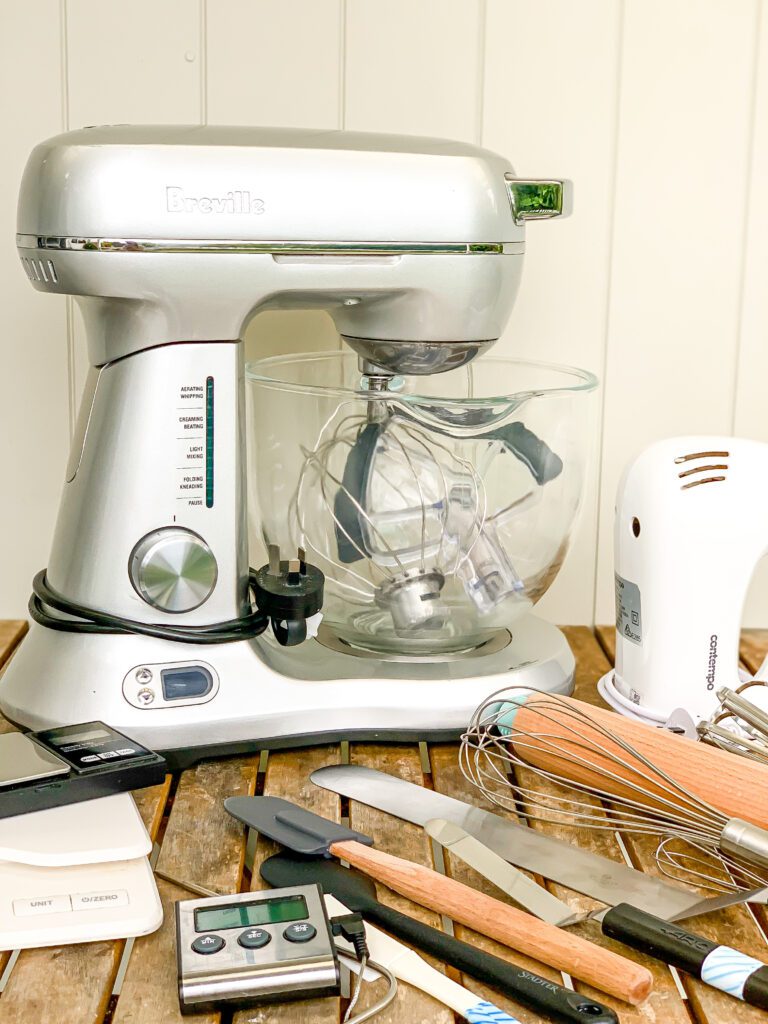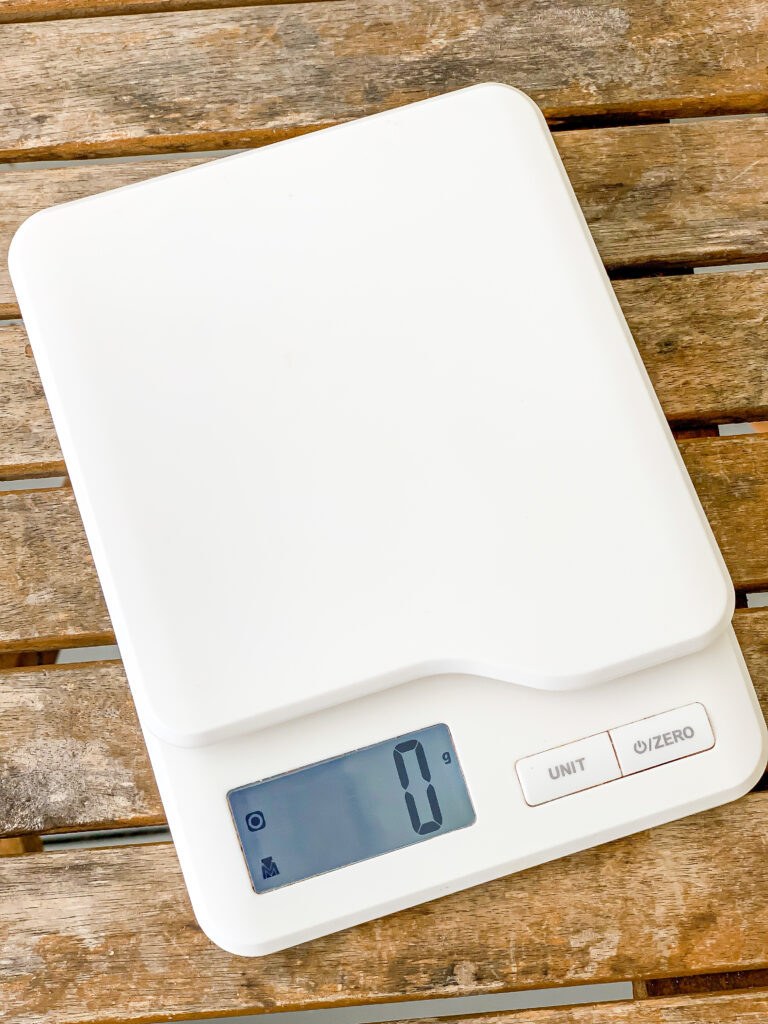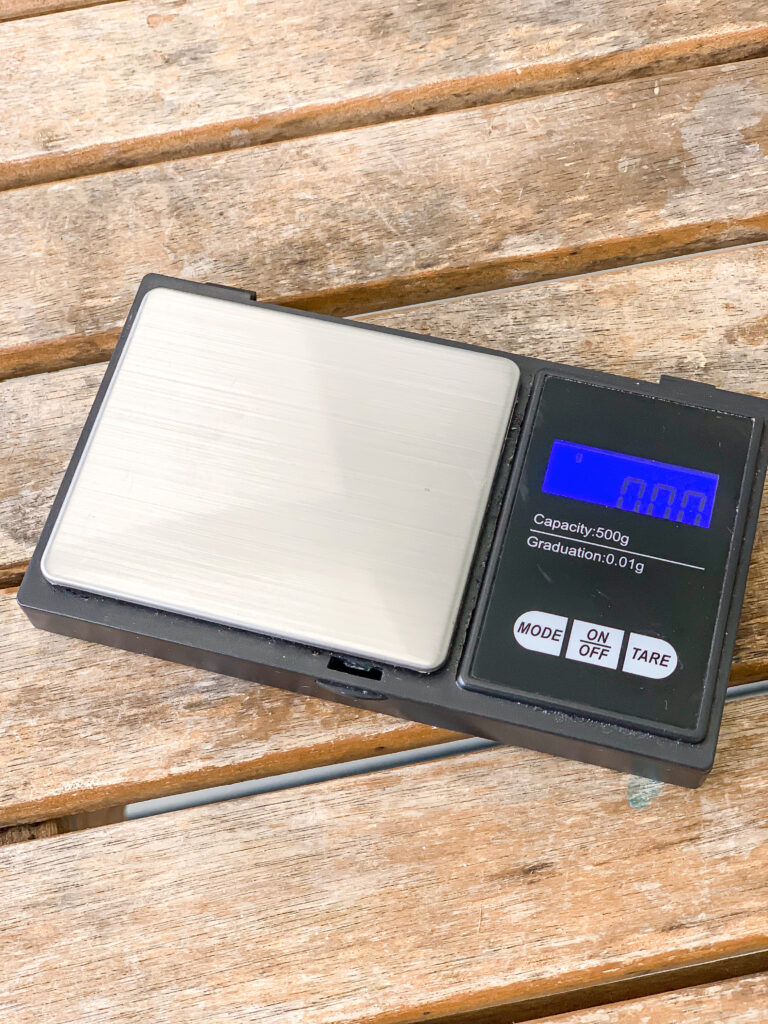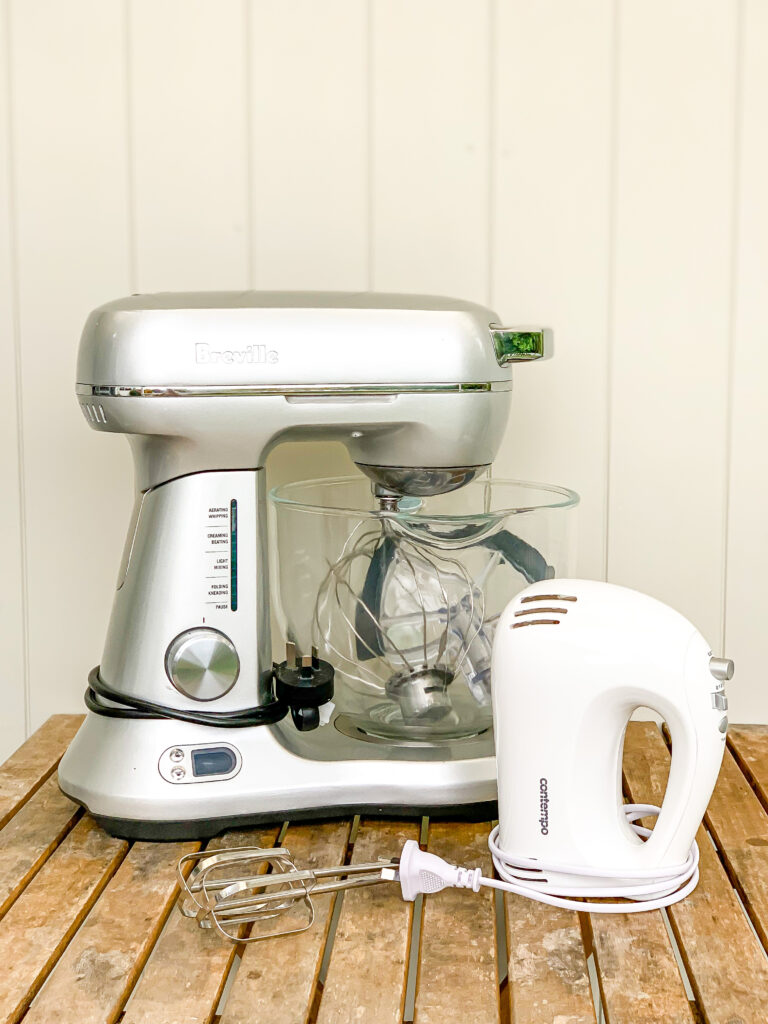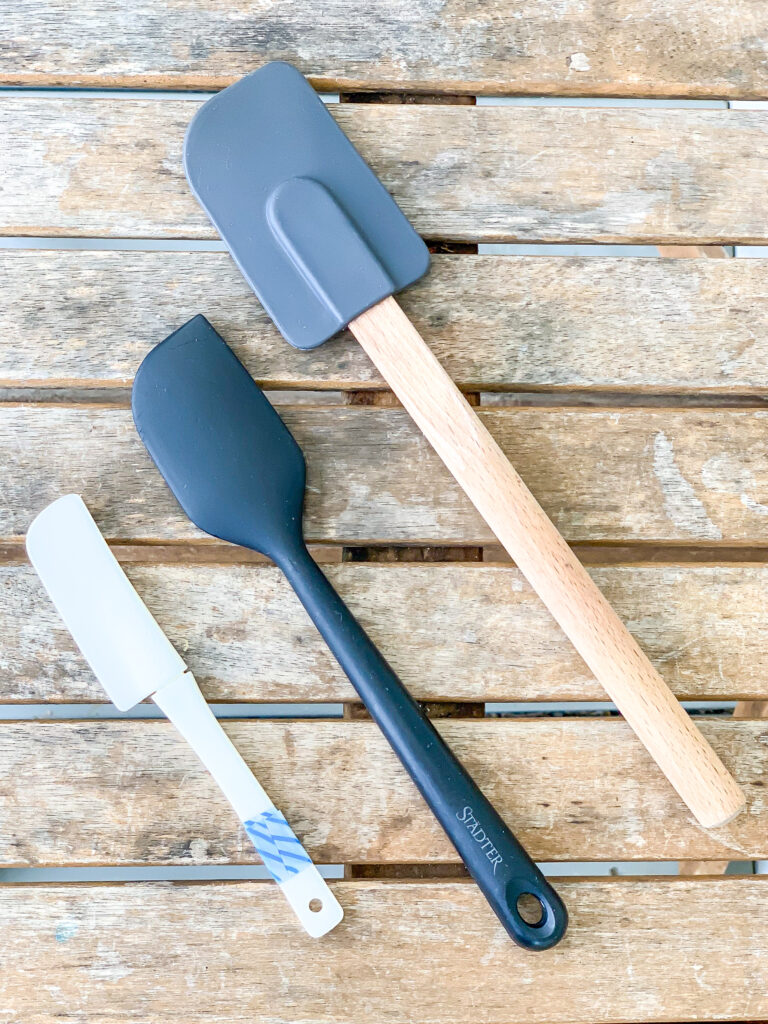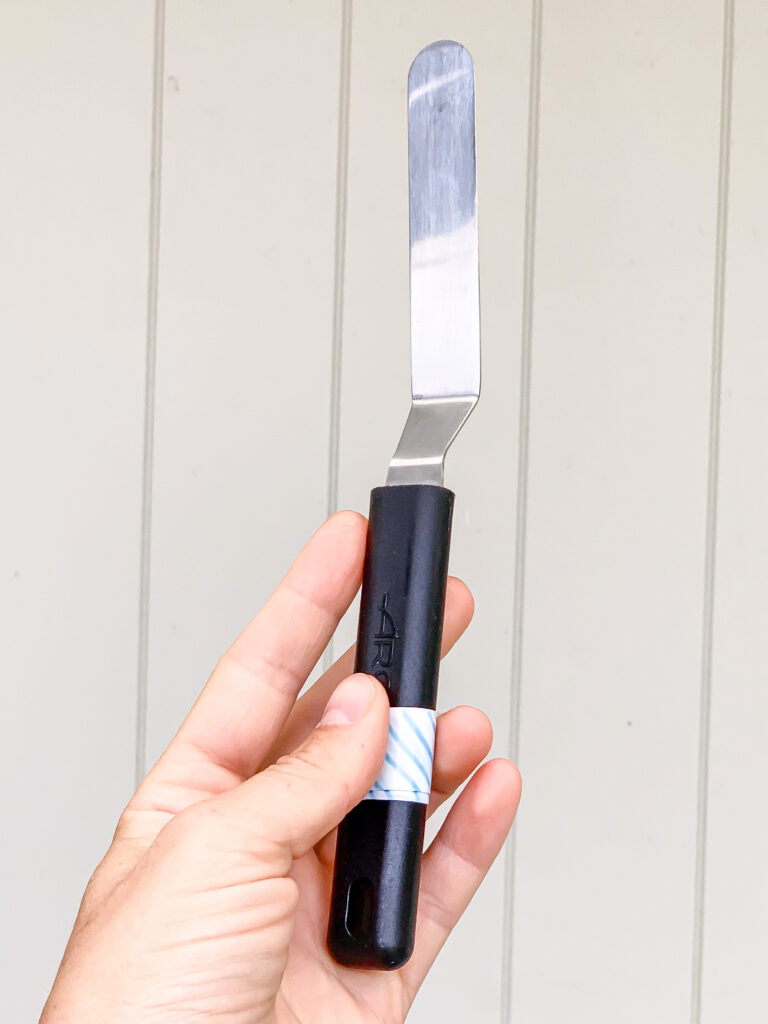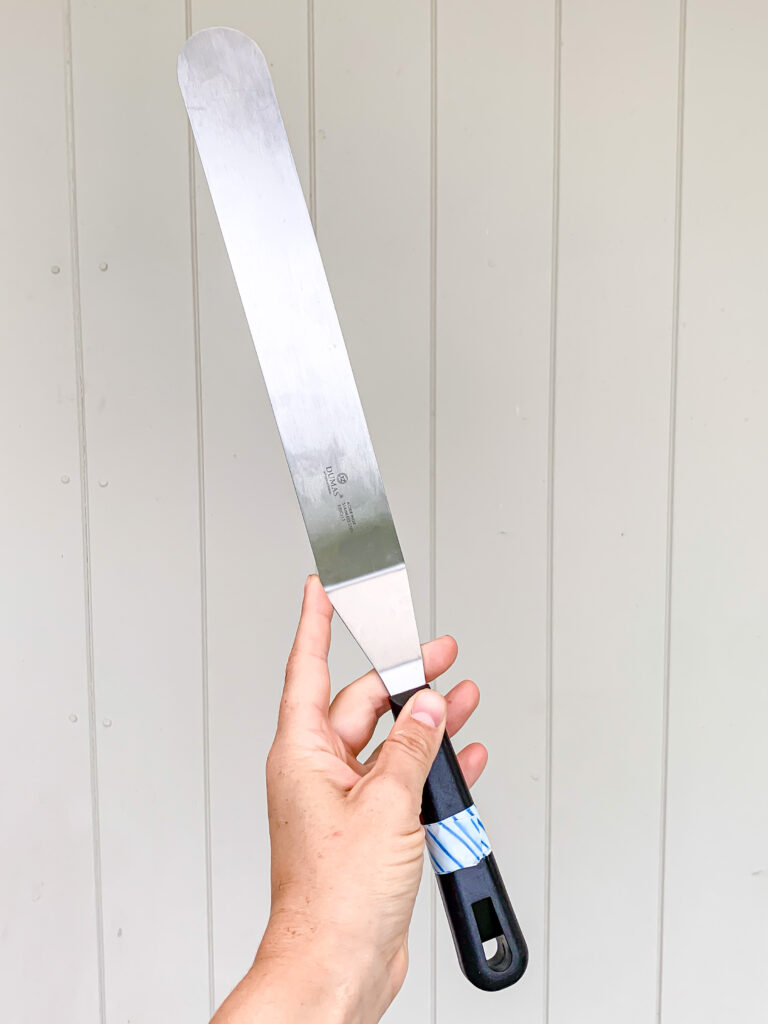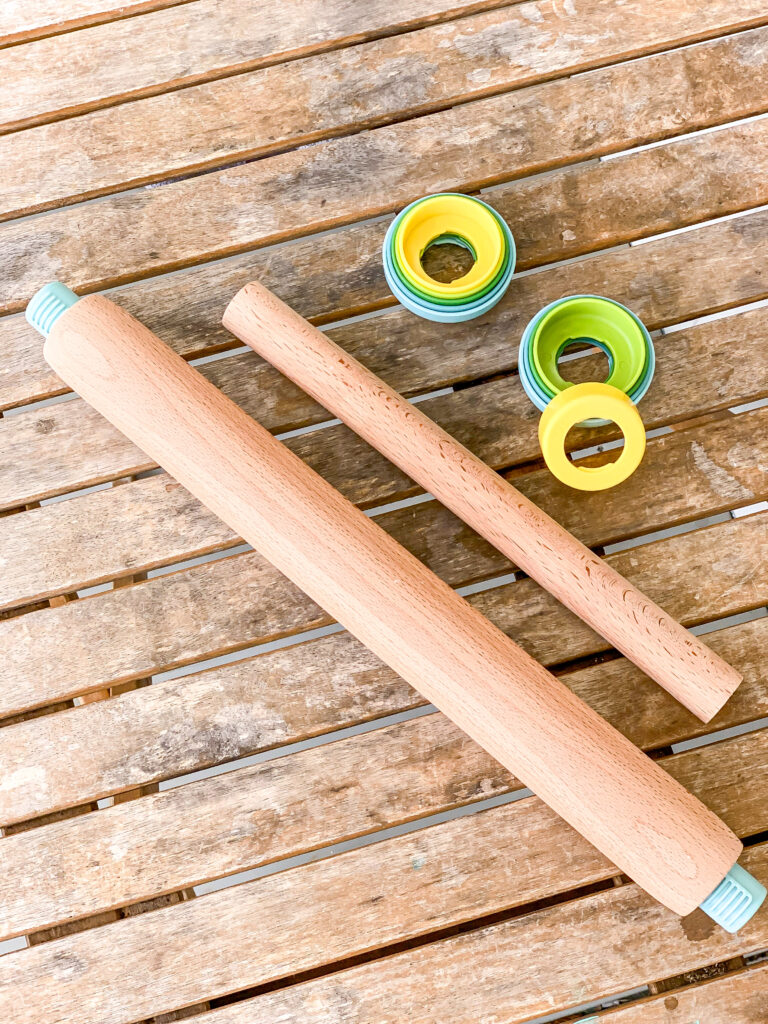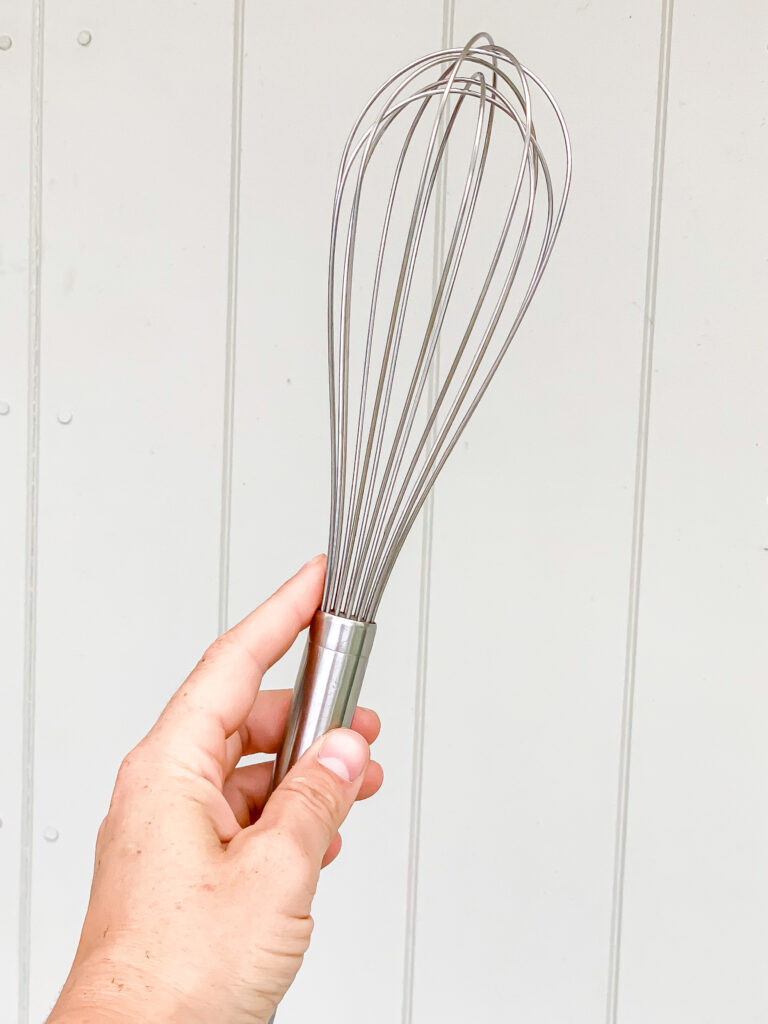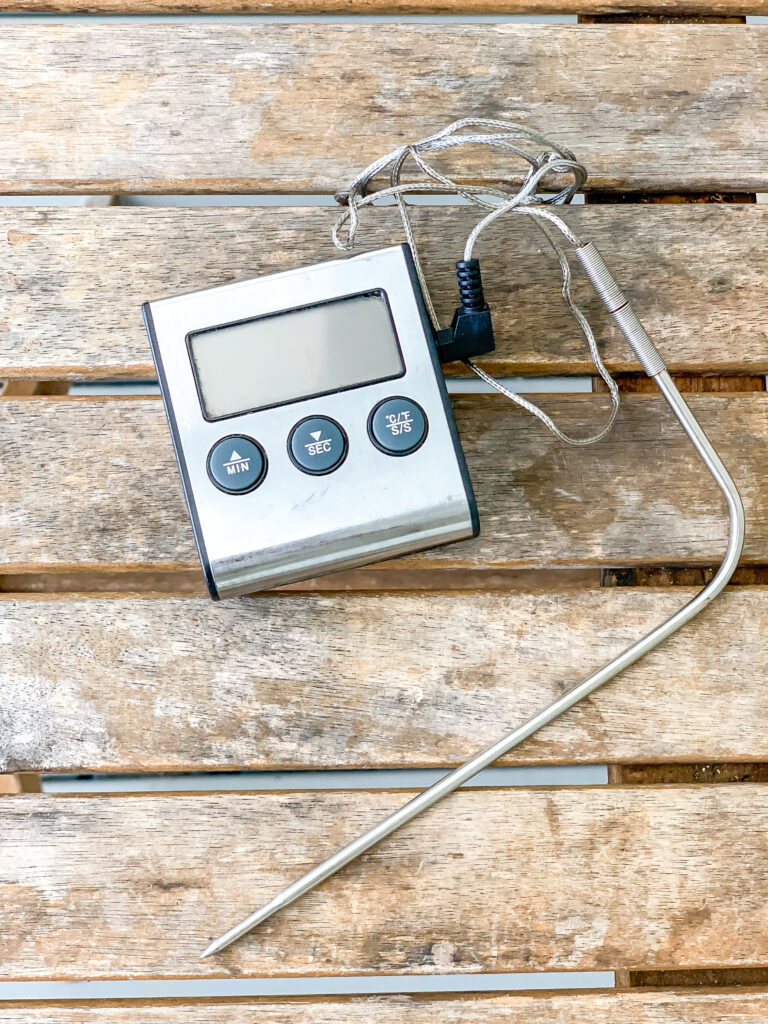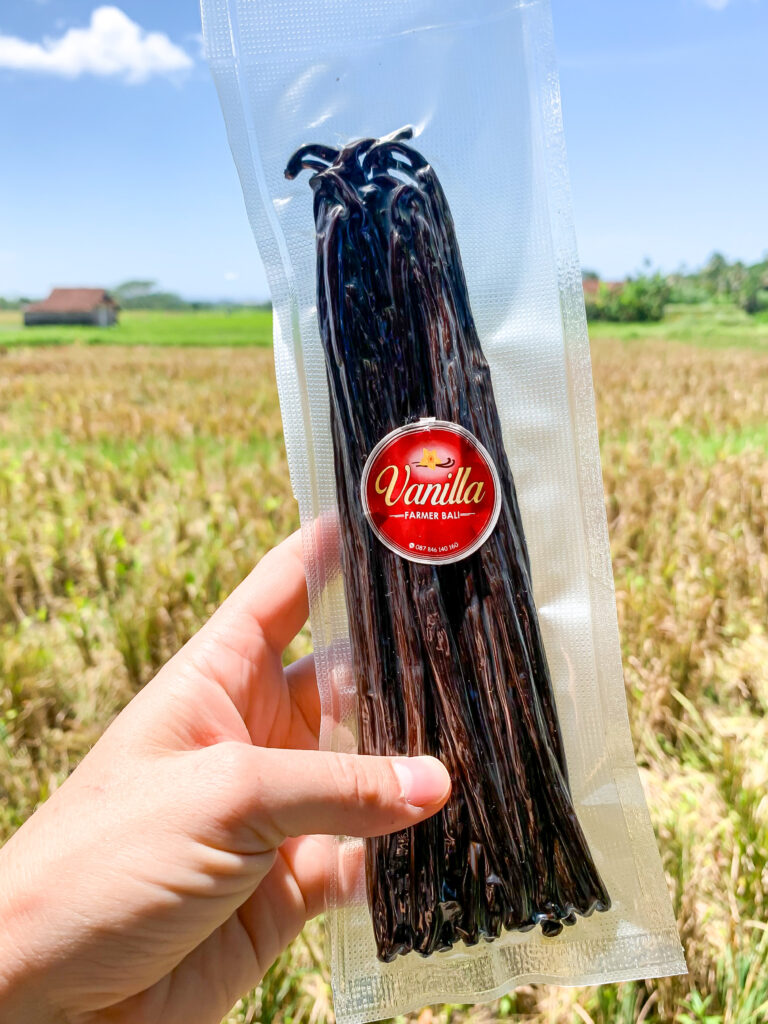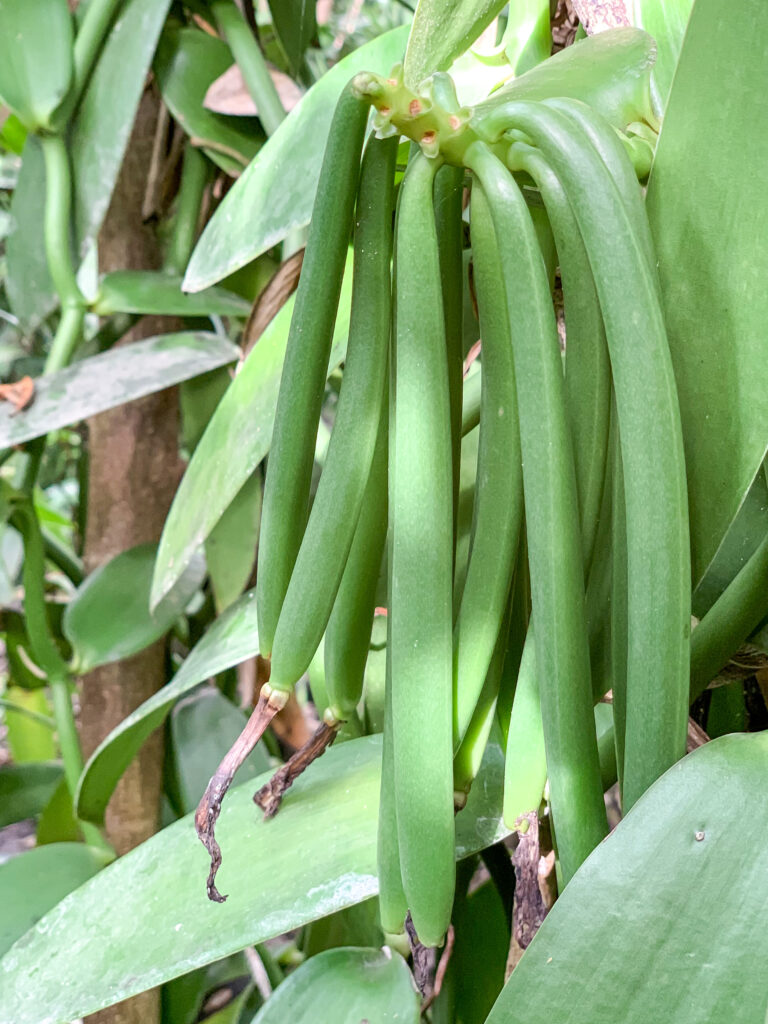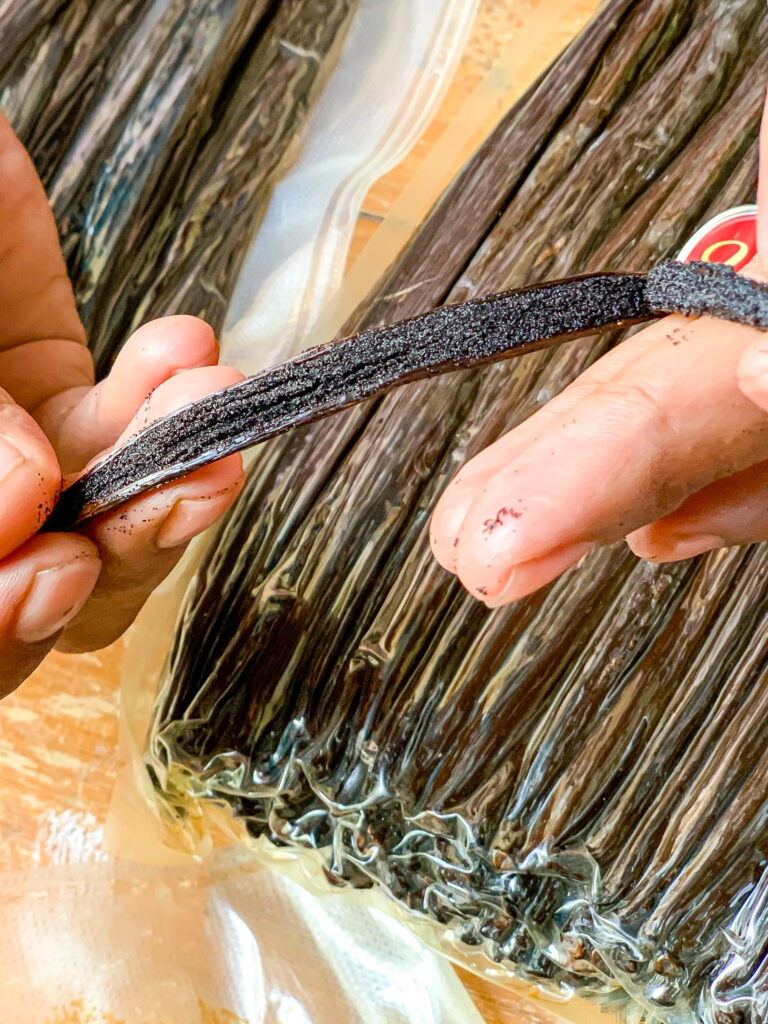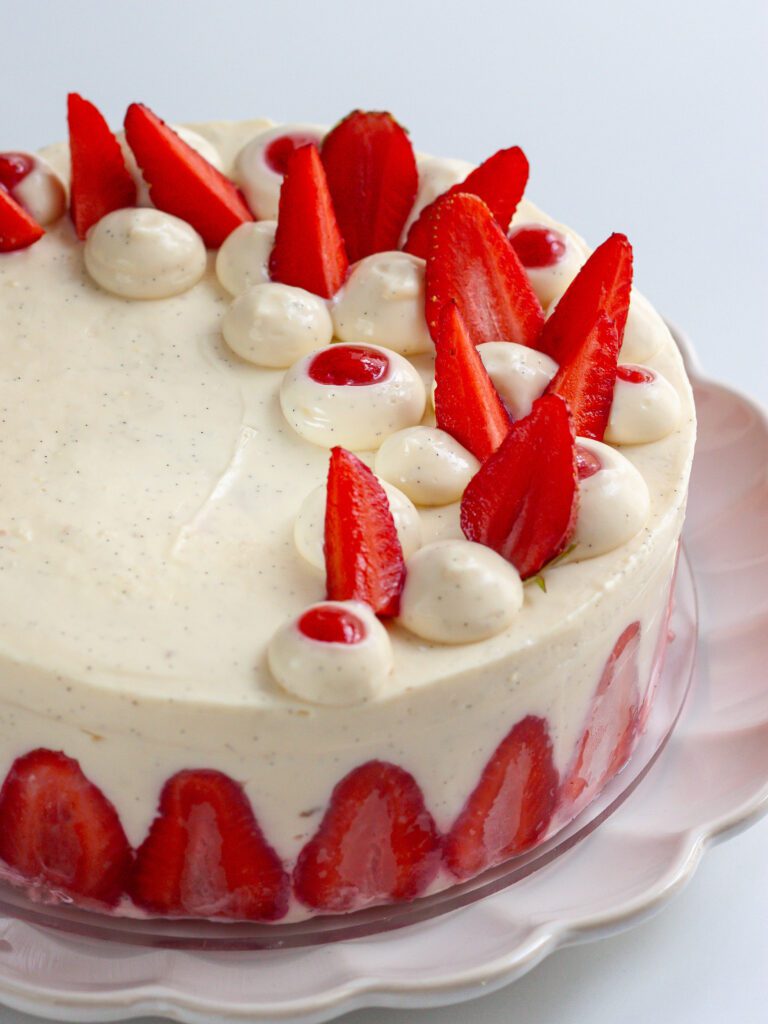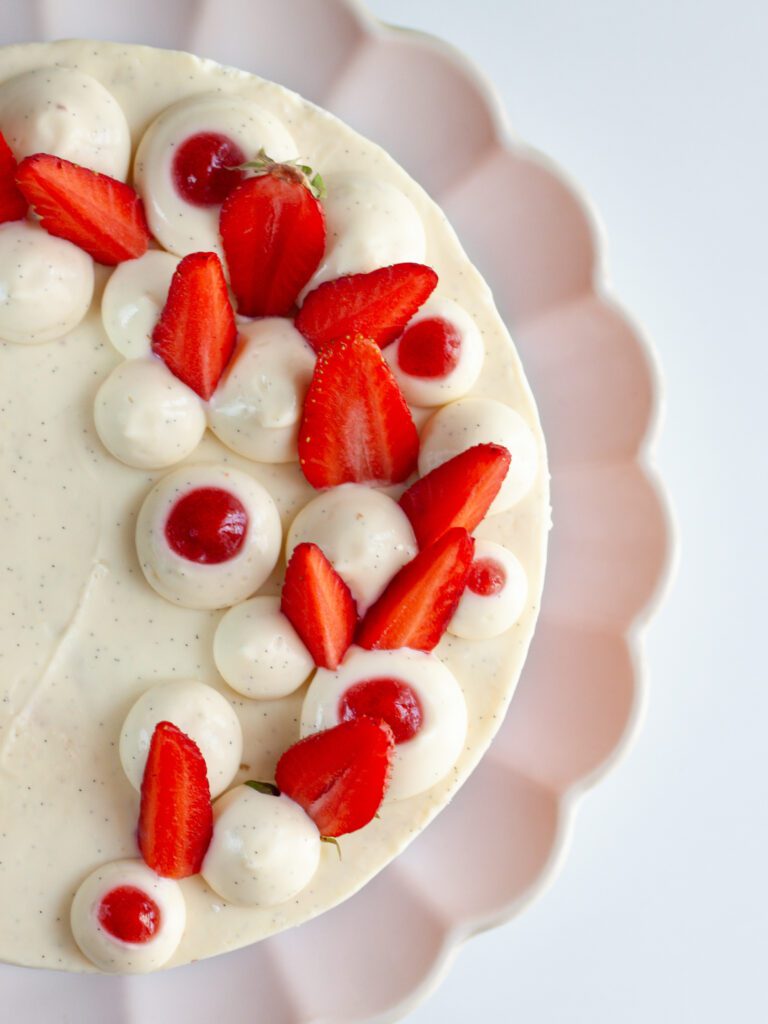One of my favourite things I learnt at Pastry School was how to make puff pastry. Once you know how to do it, the fun starts and you can get creative with it! This variation is perfect for cosy autumn and winter days. Just imagine warm and fluffy vegan apple cinnamon rolls with just the right amount of cinnamon, some icing on top and a hot cup of tea.
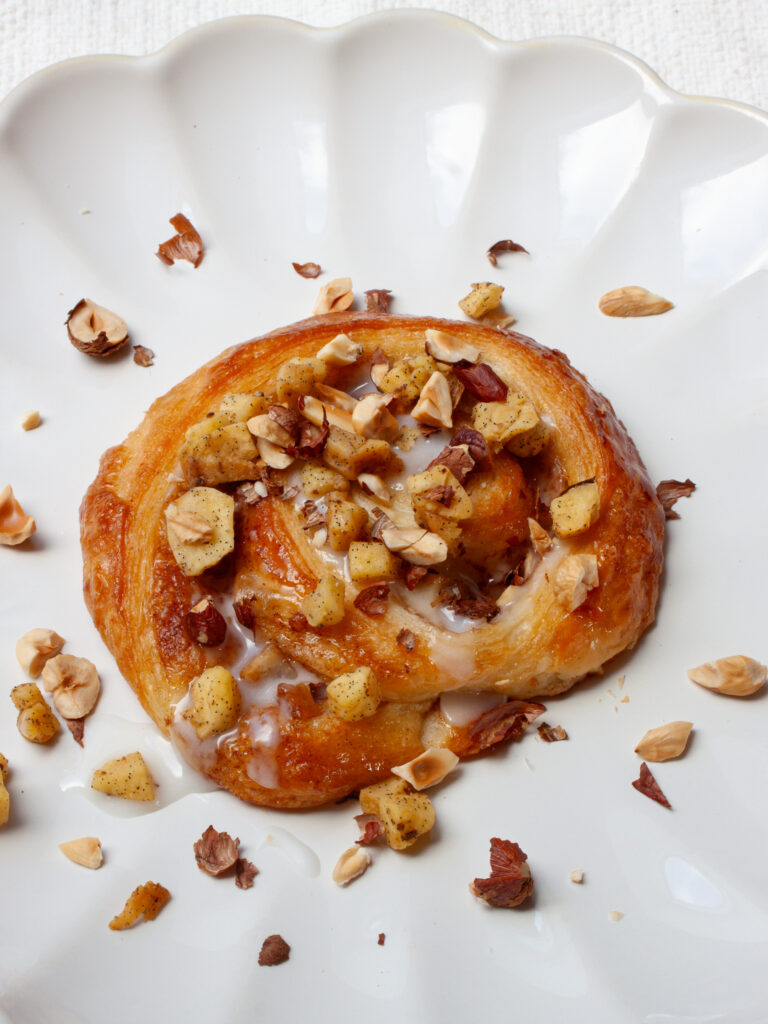
This is a great recipe for you to try making puff pastry yourself! Unlike croissants it really doesn’t need to be perfect. On the contrary we want it to be a bit messy and rustic.
Of course you can also make this recipe using store-bought puff pastry. But if you want to make sure it’s vegan or are tempted to try making it yourself, you should give this recipe a try!
I promise, these vegan Apple Cinnamon Rolls filled with soft apples mixed with brown sugar and icing on top will be delicious!
As always, if you have any questions or if instructions are unclear, don’t hesitate to leave a comment below. I’m here to help and don’t forget, others might benefit from it as well 🙂
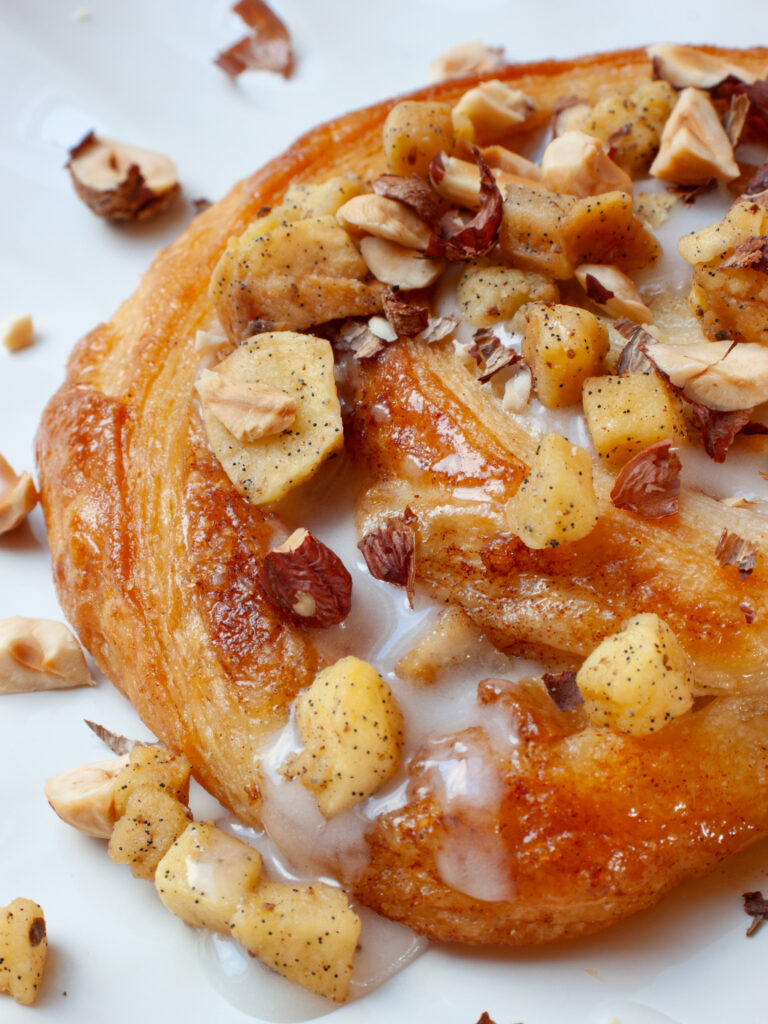
Let’s take a closer look
This recipe for puff pastry vegan apple cinnamon rolls consists of four components:
- Homemade vegan Puff Pastry
- Our delicious Apple Cinnamon Filling
- Icing to drip onto our finished Cinnamon Rolls
Everything you need to know to nail these perfect vegan Apple Cinnamon Rolls!
Vegan Puff Pastry
- 150 g T45 flour
- 150 g T55 flour
- 6 g salt
- 45 g sugar
- 15 g yeast or 5 g dried yeast
- 145 g vegan milk
- 60 g vegan butter
- 150 g vegan butter of a percentage of 82% fat
Or use store-bought (vegan) puff pastry.
For this recipe, we will mix T45 and T55 flour. If you can’t get your hands on that kind of flour, bread flour (which has a higher gluten content) or all purpose flour will work as well. Further, we’ll use regular salt and white sugar. As for the yeast, I prefer using fresh yeast. However, this recipe also works with dry yeast, which you can substitute using a 3:1 ratio. Don’t worry, I listed both options for you.
Now you might wonder if making vegan puff pastry is a lot more complicated than normal puff pastry. But it’s actually not!
All you have to do is replace normal milk using your favourite plant-based milk and the normal butter with vegan butter. Make sure to get vegan butter with a percentage of 82% fat. Otherwise it will be more complicated to get beautiful layers as the butter will melt quicker. Make sure you do not use margarine that is labelled as “extra soft” or “extra spreadable” – these are so soft that it’ll be very tricky to get beautiful layers of butter and dough.
How to make your own vegan puff pastry
To start, add the T45 flour, T55 flour, salt, sugar, yeast, vegan milk and the first amount of butter to your mixing bowl. We want our dough to be cold in the beginning as it will heat up while we’re mixing. So make sure, that your plant-based milk and your butter are cold! Mix for 3 minutes on low speed to combine your ingredients. After, keep on mixing for 7-9 minutes on medium speed. Stop the machine when you can easily stretch your dough and you have a beautiful glutinous net.
In my giphy below you can see how easily I can stretch the dough – it almost gets transparent and you can see my fingers through it without the dough breaking. That’s what we want! So be patient and give your stand mixer some time.
Now, shape your dough into a ball, cover it with cling film and let it sit at room temperature for 35-45 minutes. During that time it should rise visibly, but keep an eye on it – we also don’t want it to rise too much.
In the meantime, prepare a 15 x 30 cm (6” x 12”) rectangle out of parchment paper.
While you’re still waiting, you can also already prepare another 15 x 15 cm (6” x 6”) rectangle, also out of parchment paper. Place your second (the bigger) amount of butter on it, close it and roll the butter into all the corners using a rolling pin. It should be as even as possible. After, pop the butter back in the fridge.
Once your dough has risen, remove the air from your dough by flattening your ball. Place it onto your 15 x 30 cm (6” x 12”) parchment paper rectangle, close it and move it into all the corners using a rolling pin. Again, your dough rectangle should be as even as possible. Place in the freezer for 10 minutes.
How to organise yourself: If you want to make your apple cinnamon rolls over two days, you can prepare your dough one the first day. For this, make your dough as mentioned above. Instead of letting it sit at room temperature for 40-45 minutes only let it develop for 10 minutes. After that, shape the dough into your rectangle. Place it in the freezer for 15-20 minutes and leave it in the fridge overnight. Then continue exactly as outlined below.
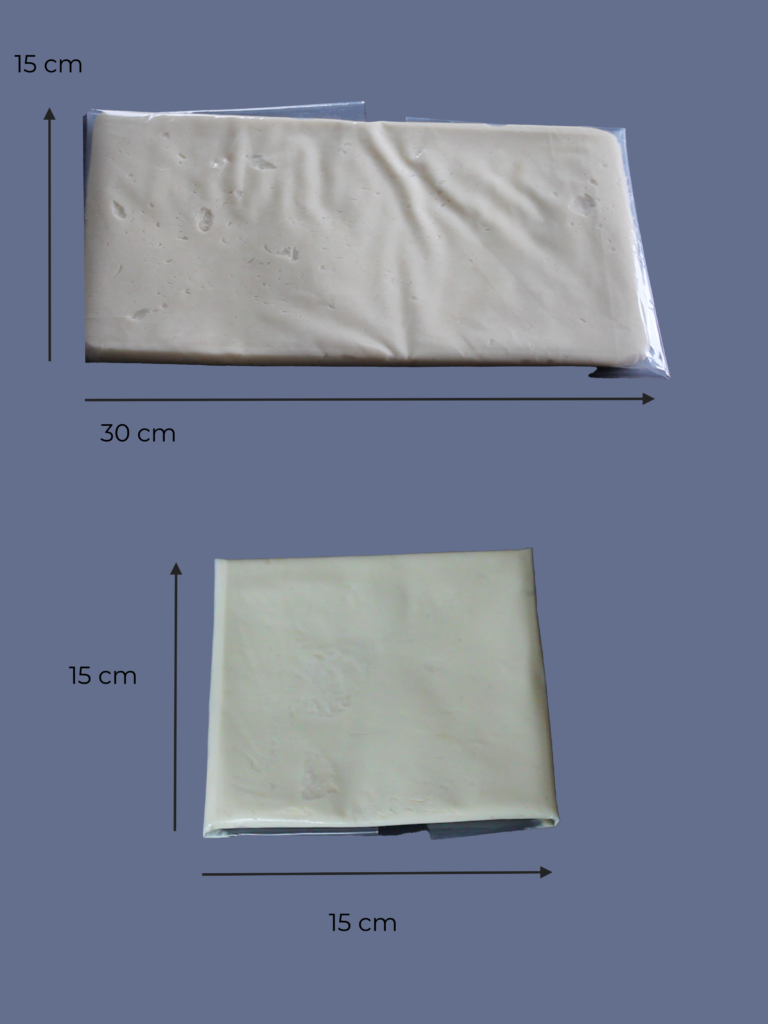
Creating those beautiful puff pastry layers
If you are new to puff pastry or are still unsure about how to proceed, I recommend you watch my video. Seeing what I am doing will make it a lot easier for you to understand the next steps!
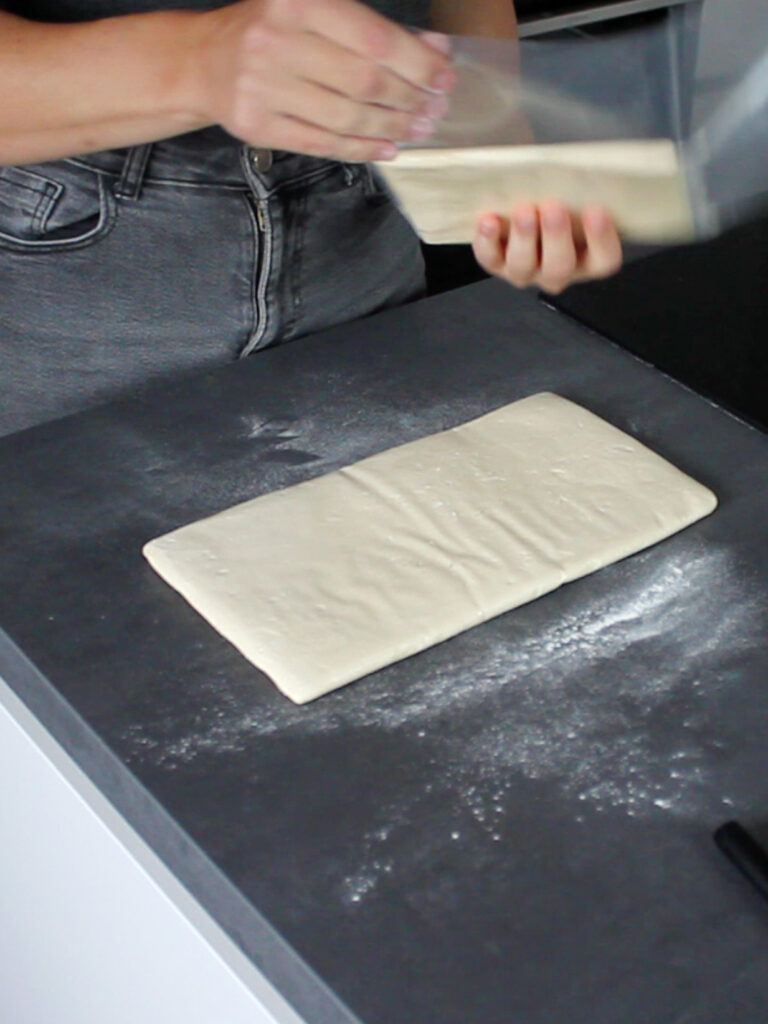
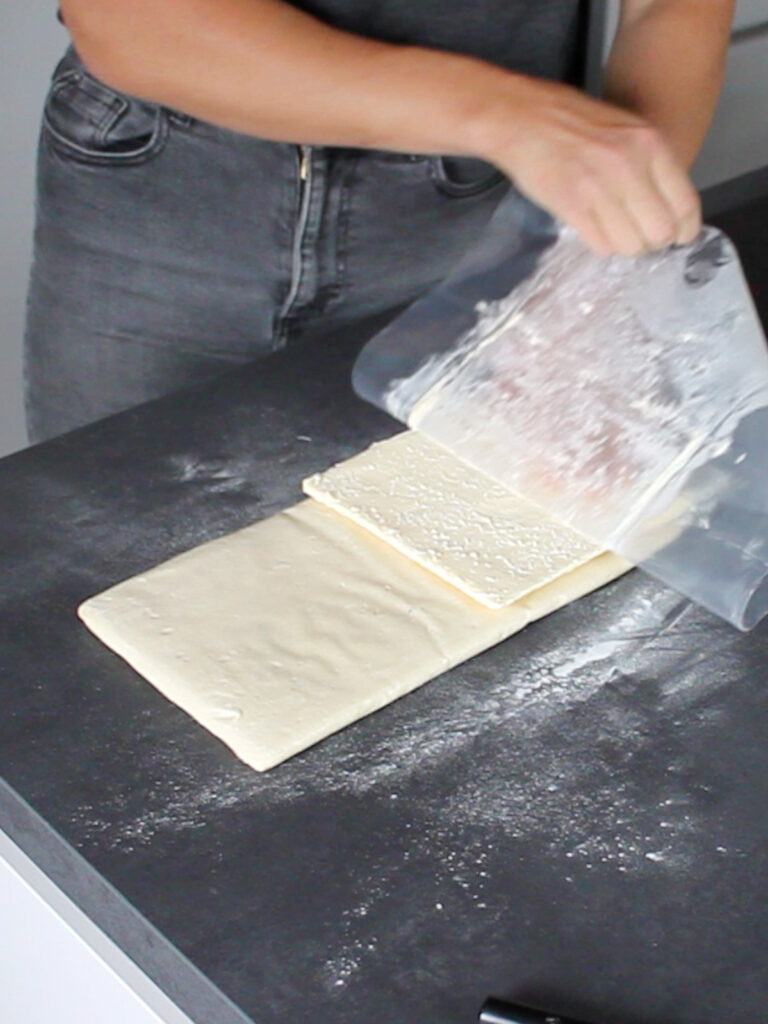

Now, take out your dough and your butter. Make sure both have the same texture. For the butter, this means that you should be able to hold it in your hands and bend it a little bit. It should not break (if it does it’s to cold) and it also shouldn’t be melting in your hands. Place your butter rectangle on one of the sides of your dough rectangle. Then, using a knife, cut your dough in the middle. Place the other half of your dough on top of the butter. You now have a square sandwich of dough – butter – dough.

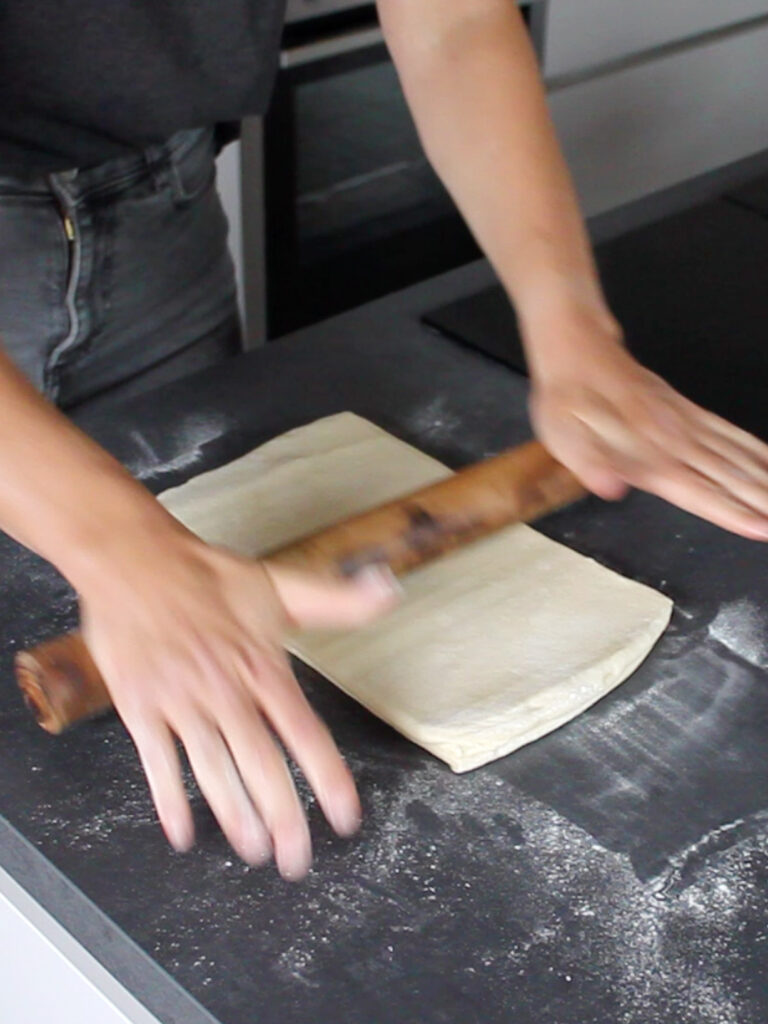
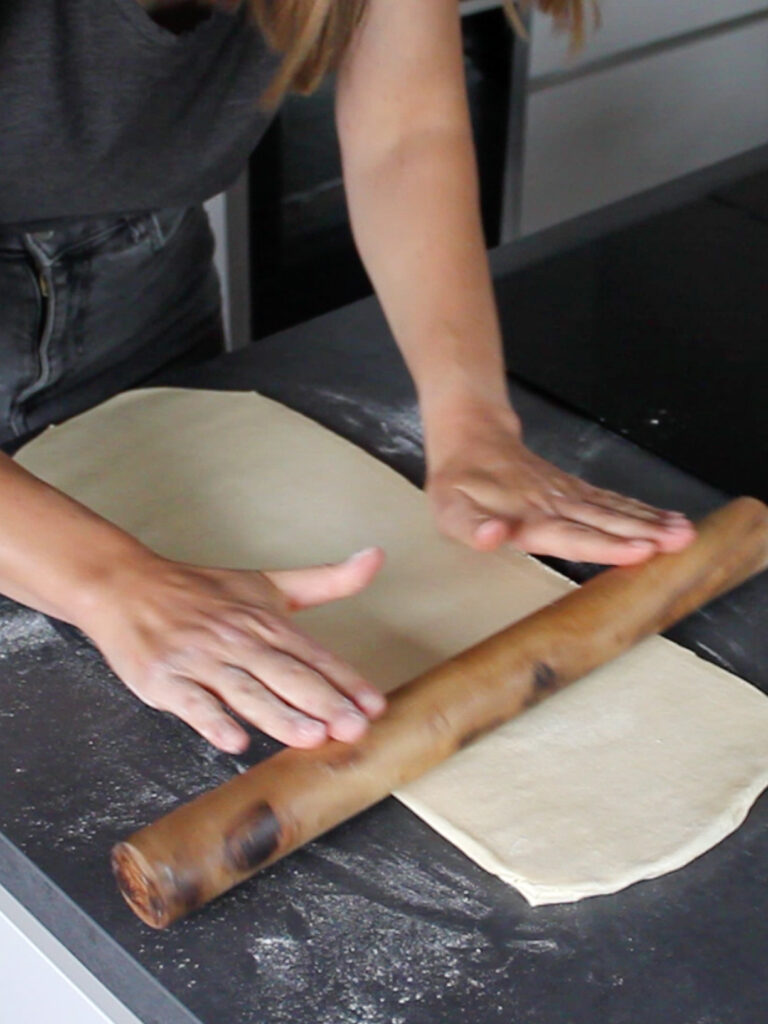
Before you start rolling your dough, place your rolling pin on top of your sandwich and create some waves. For this you apply some gentle pressure onto your rolling pin. Create waves as shown in the image. If it feels very hard and you have to apply a lot of pressure for the dough to create the waves I recommend you let your sandwich sit at room temperature for a little longer.
Now start rolling. I like to always start rolling from the middle. So you start rolling from the middle towards you for 2-3 times, then you roll from the middle away from you for 2-3 times. This ensures you roll your dough out evenly. Keep on rolling until your dough reaches a length of around 60 cm (24”).
If your dough or your butter is too cold: If you have to force it, because your dough won’t move, you will quite likely break the butter. This means you will end up having lots of small butter pieces instead of the desired one thin layer of butter. Even if this happens to you, don’t panic! I have been there and you will still get nice cinnamon rolls in the end. This only really gets problematic for croissants, because that’s when we want everything to be perfect.
If your dough or your butter is too warm: This is the case if you have troubles rolling out your dough. You roll and you roll but it doesn’t get longer but instead it only keeps retracting. This means that your sandwich needs to rest. Simply place it in the freezer for 5 minutes and try again!

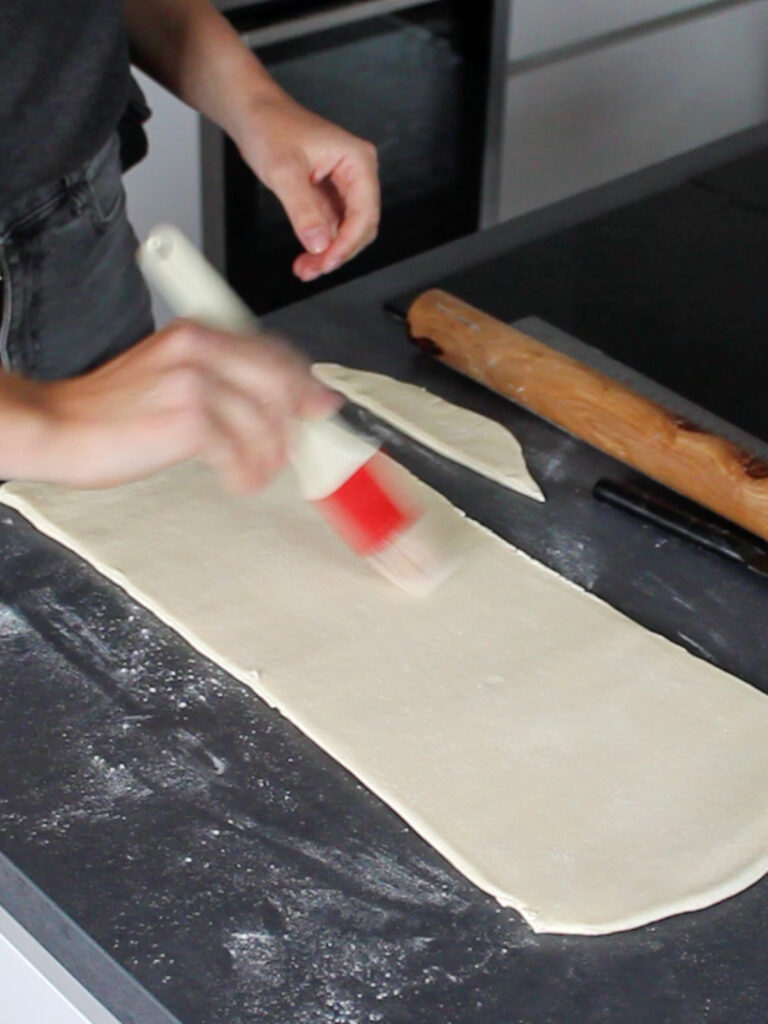
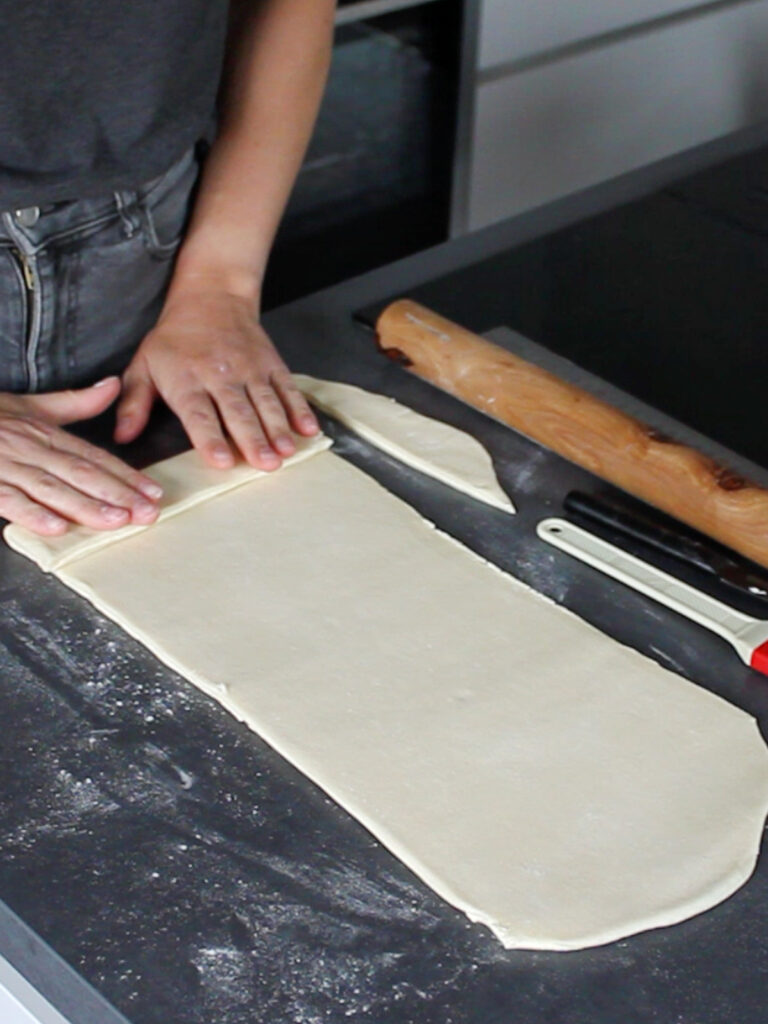
Once your dough is rolled out, we will first be doing a double fold. For this, cut the side closest to you with a knife. Then, using a pastry brush, remove the excess flour on top of your dough. Now, fold around 1/8 of your dough from the bottom towards the middle.
Why should I remove the excess flour? If you do not remove the excess flour on top of your dough before folding, your layers of dough might not stick together sufficiently. As a result, when you roll out your dough again after folding, the different layers may move instead of staying perfectly stacked on top of each other.
Another reason to remove excess flour is that you will be adding more flour to your dough. This can slightly dry out your final result.
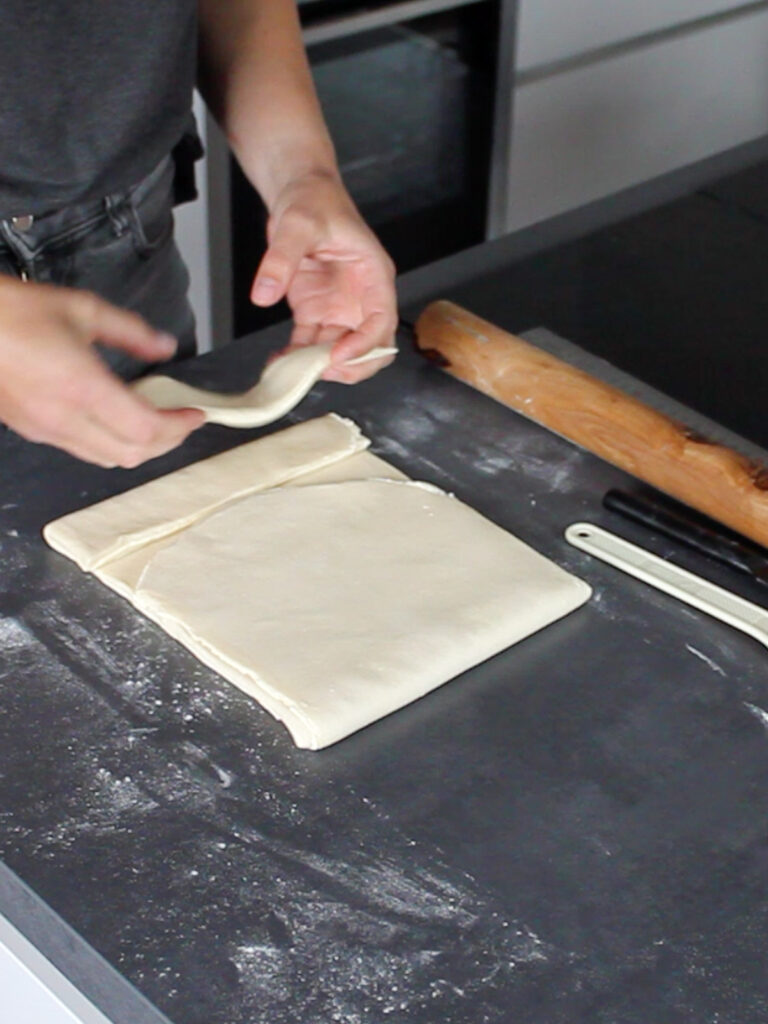
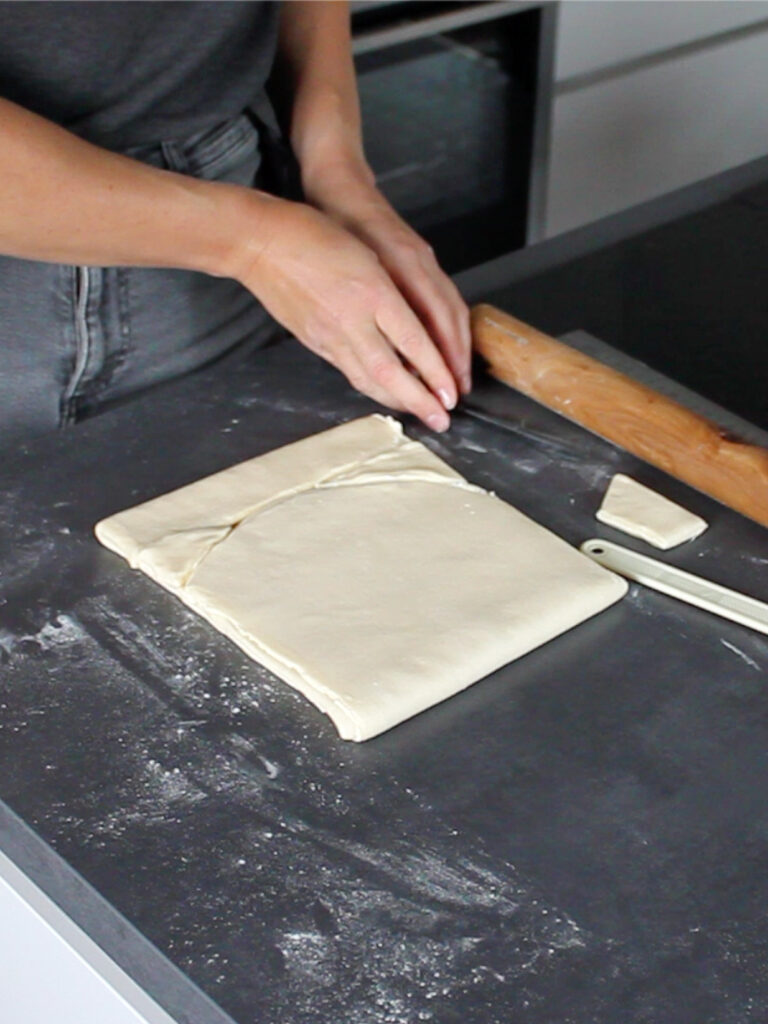
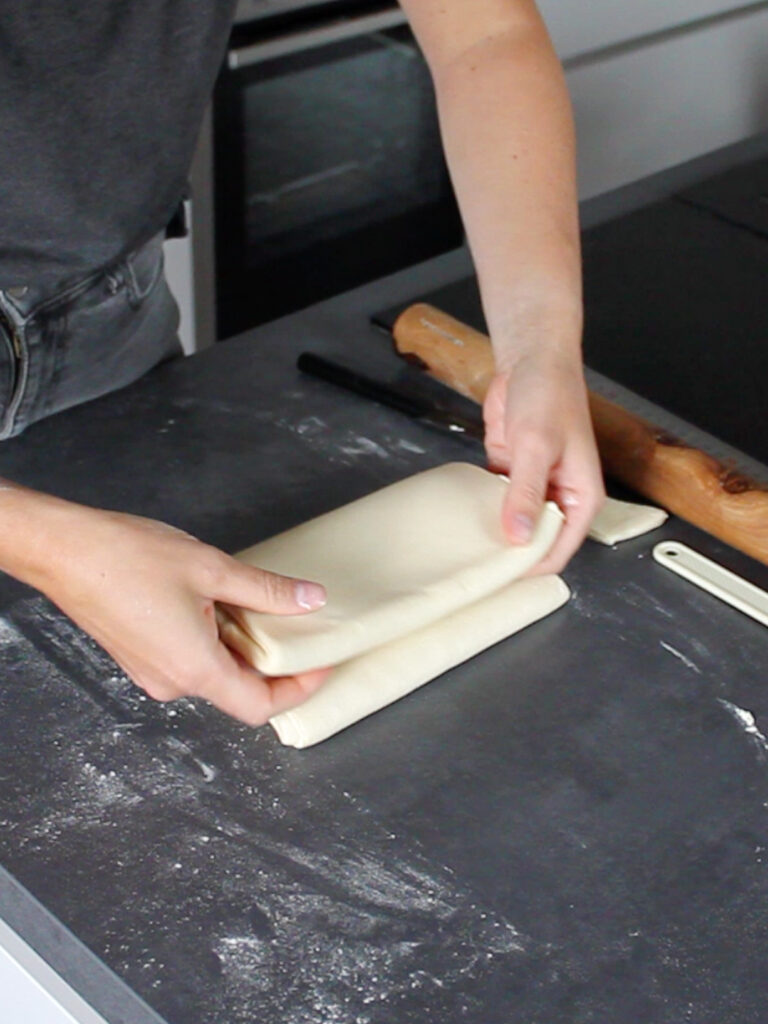
To finish the double fold, take the upper end of your dough and fold it towards you. To fill the gaps, cut smaller pieces of the dough you cut off before. Place them in the gaps. Lastly, fold the dough over. For this, pick up the dough in front of you and fold it over to the upper edge. If your dough is still nice and cold you can continue with the following single fold straight away. In case it’s getting too warm, place it in the freezer for 5-10 minutes and continue after. And, when in doubt, I recommend popping it in the freezer for a little bit. 🙂
Is it really necessary to fill the gaps? Well probably every pastry chef has their own opinion on this. Alternatively you can also stretch your dough a bit to fill the gaps. But this is only possible if your gaps are rather small. By stretching the dough too much in one spot you might end up having slightly irregular layers overall.
Theoretically, you could also cut off the irregular dough on both sides. With this method you get it perfectly, but you will also waste a lot of dough.
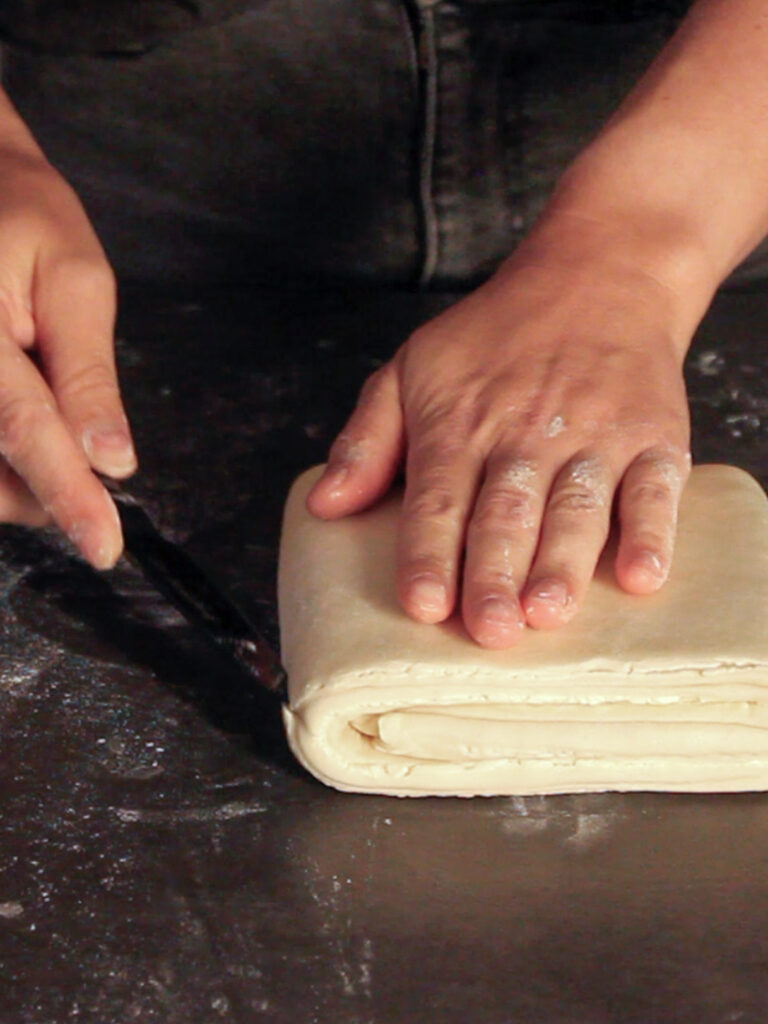
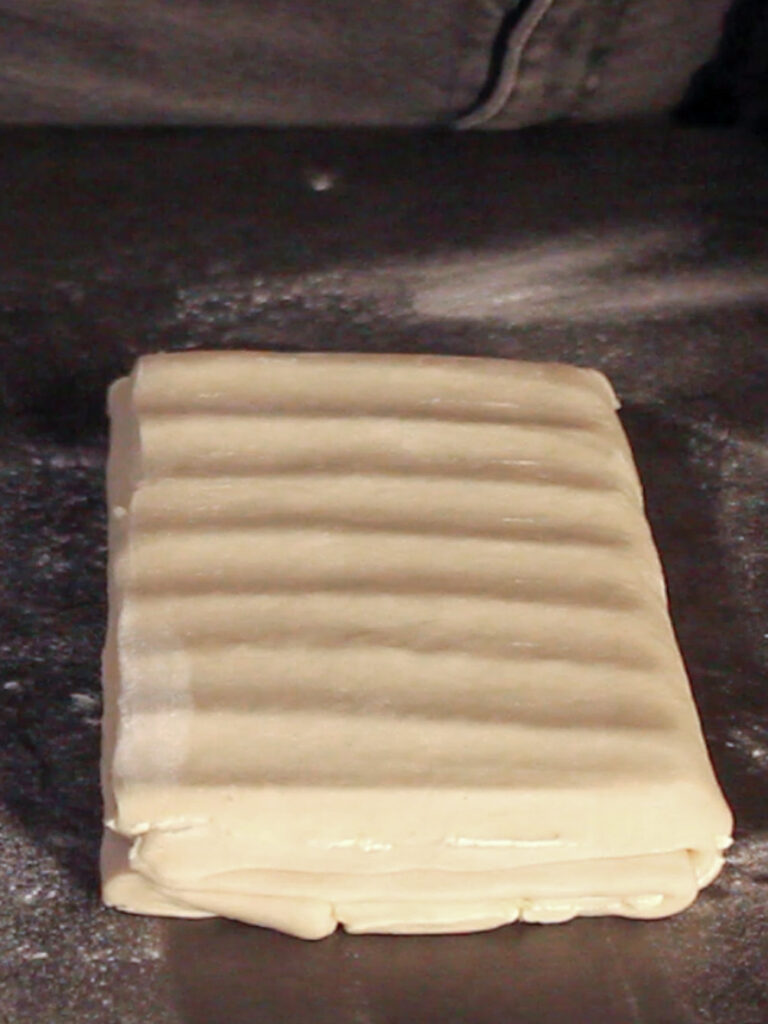
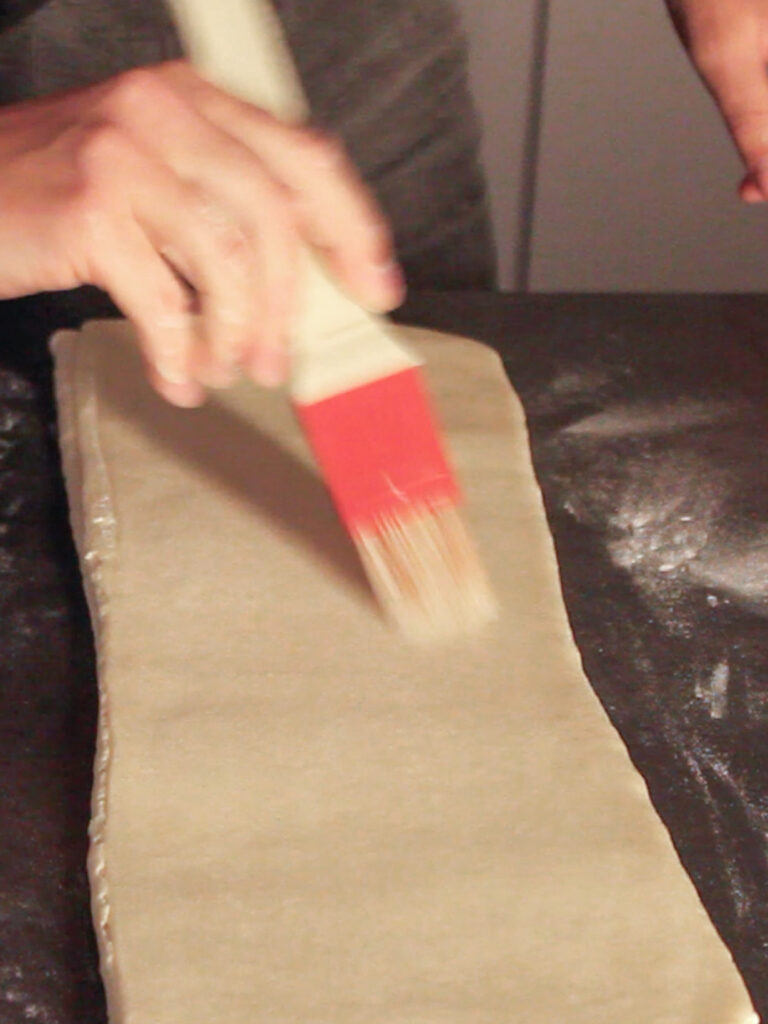
Once you’re ready to do your single fold, place your dough in front of you. Using a knife, cut open the closed sides on the right and the left of your dough. Then follow the same steps as above: Flatten your dough by making waves, then roll it to around 40 cm (16”) length. Again, pay attention to the temperature of your dough (see above). Once you reached the right length, remove any excess flour with a brush.
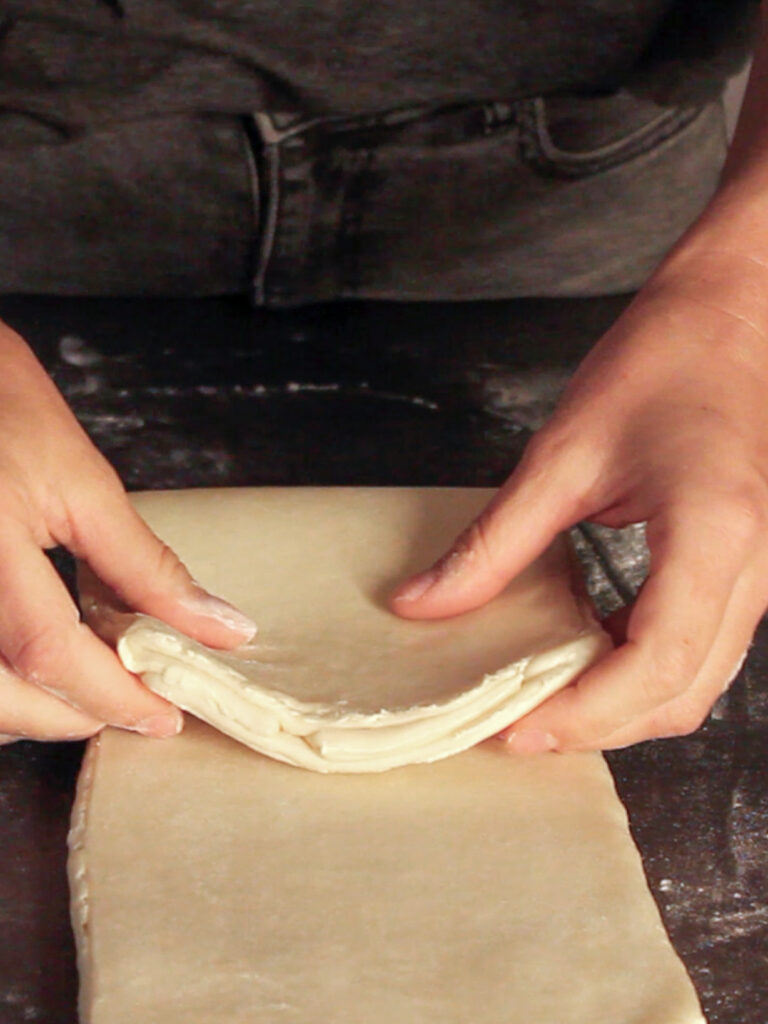
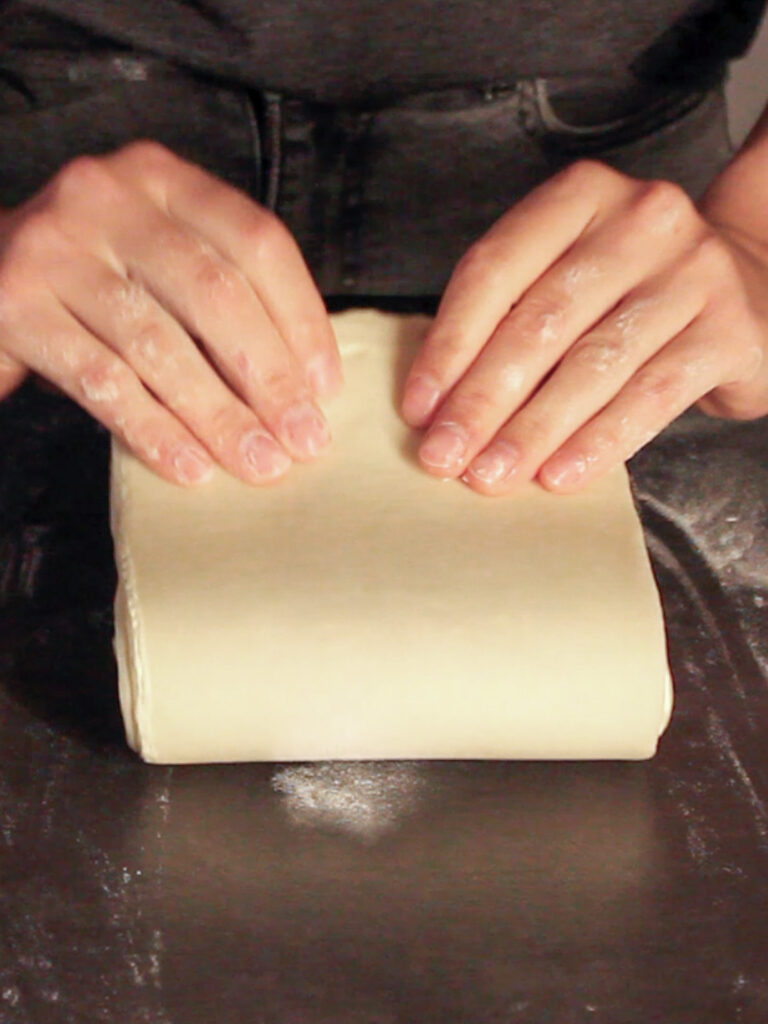
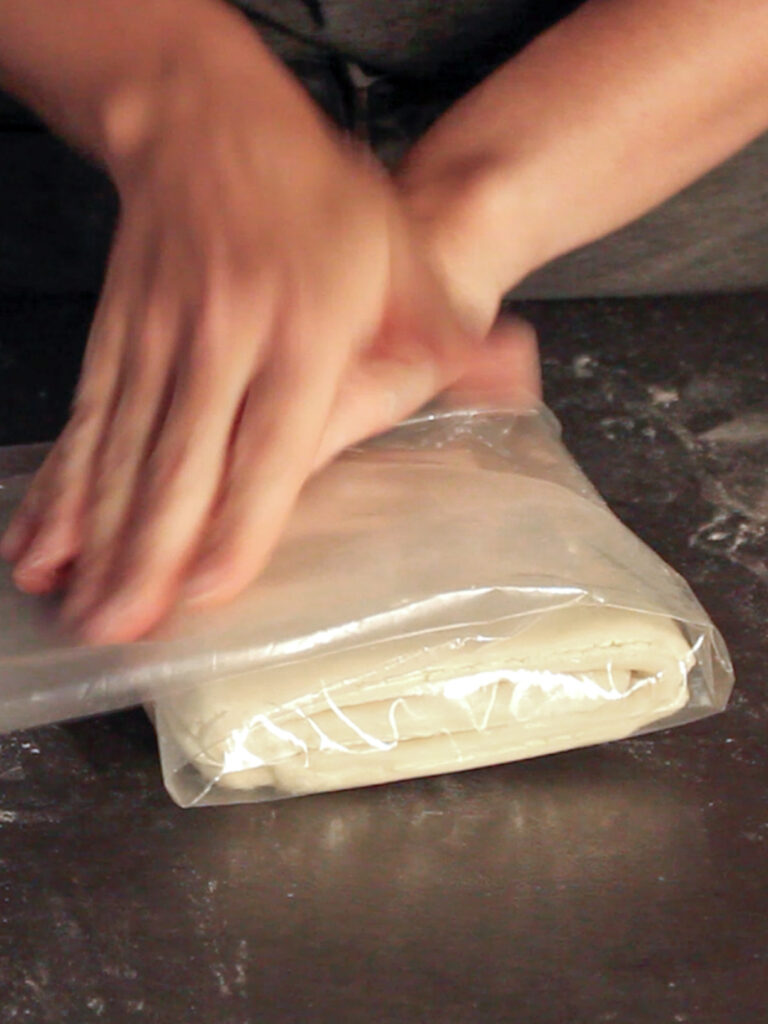
This time only a so called single fold is required. If you risk having big dough gaps, cut off some dough like you did in the step before. Then, take one third from the bottom of your dough and fold it over. Now take the upper third of the dough and fold it down.
Again, cut the two closed edges open using a knife. Place your dough back in the fridge for at least one hour as it will need to rest.
Apple Cinnamon Filling
- 2-3 apples
- 70 g vegan butter
- 100 g brown sugar
- 1 teaspoons of cinnamon
- 1/2 vanilla bean
I know puff pastry is tricky! But this step is easy: Peel your apples, cut them into small cubes and place them in a bowl. Scrape 1/2 vanilla bean and add to the apples. Slightly heat the butter in the microwave until soft (not liquid!), add the sugar and cinnamon and mix everything well. You will get a creamy mixture. Keep the butter-mix and your apples at room temperature. And that’s it!
Curious about vanilla? Hop over here to learn everything I discovered when visiting a vanilla farmer in Bali!
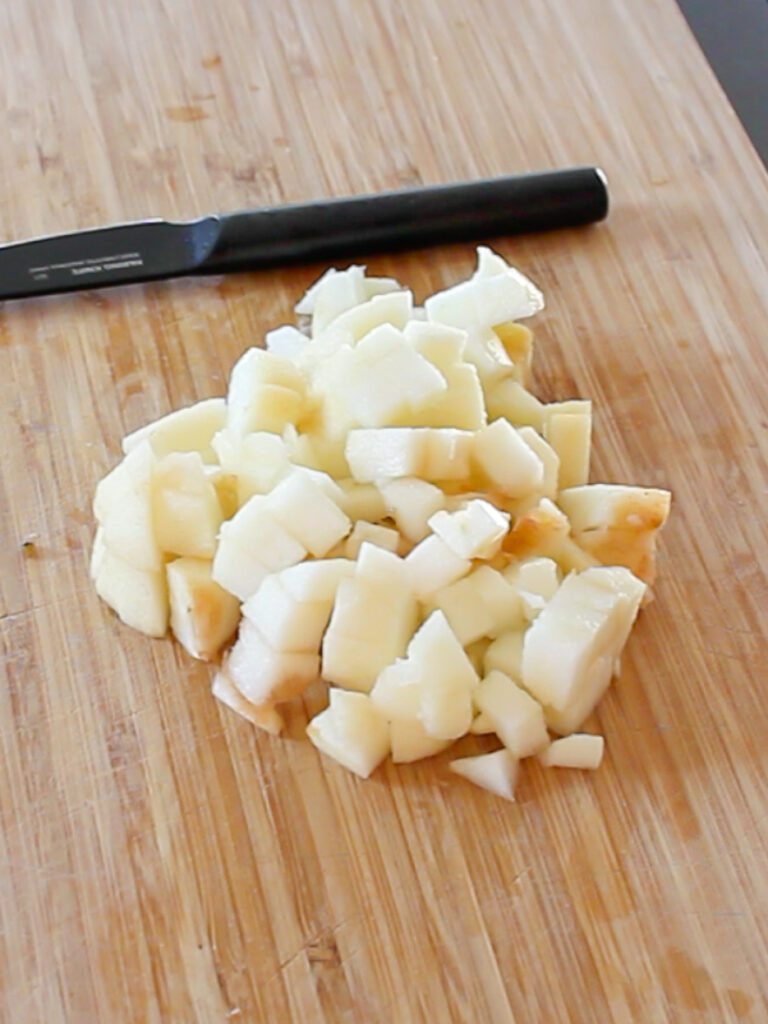
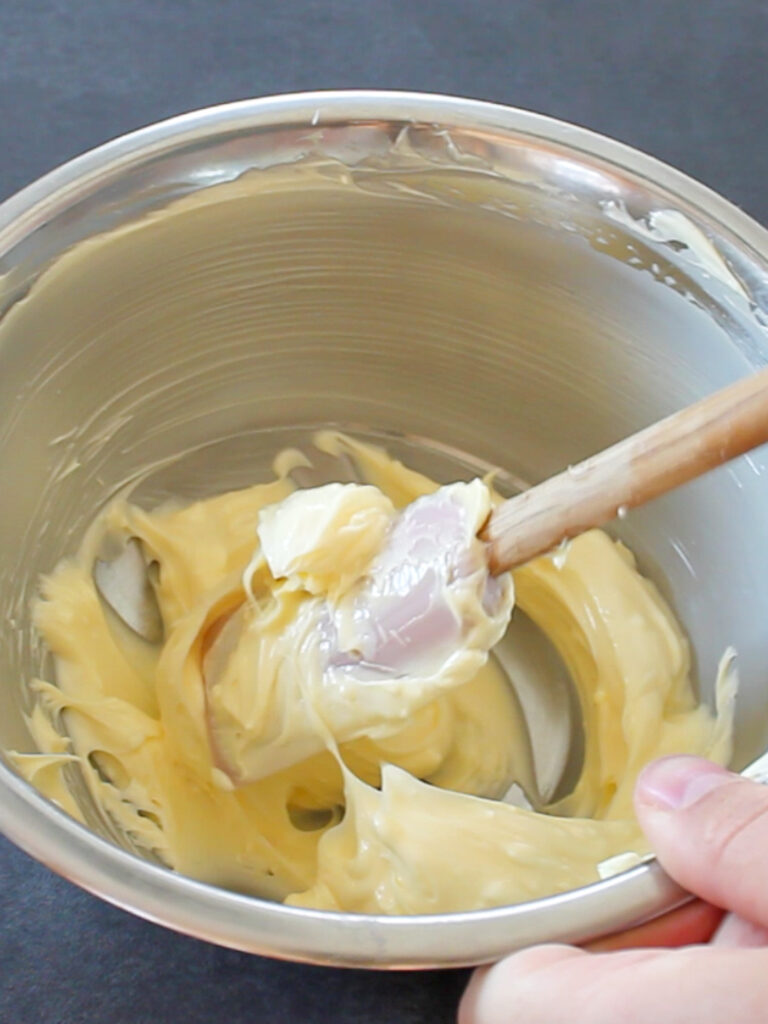
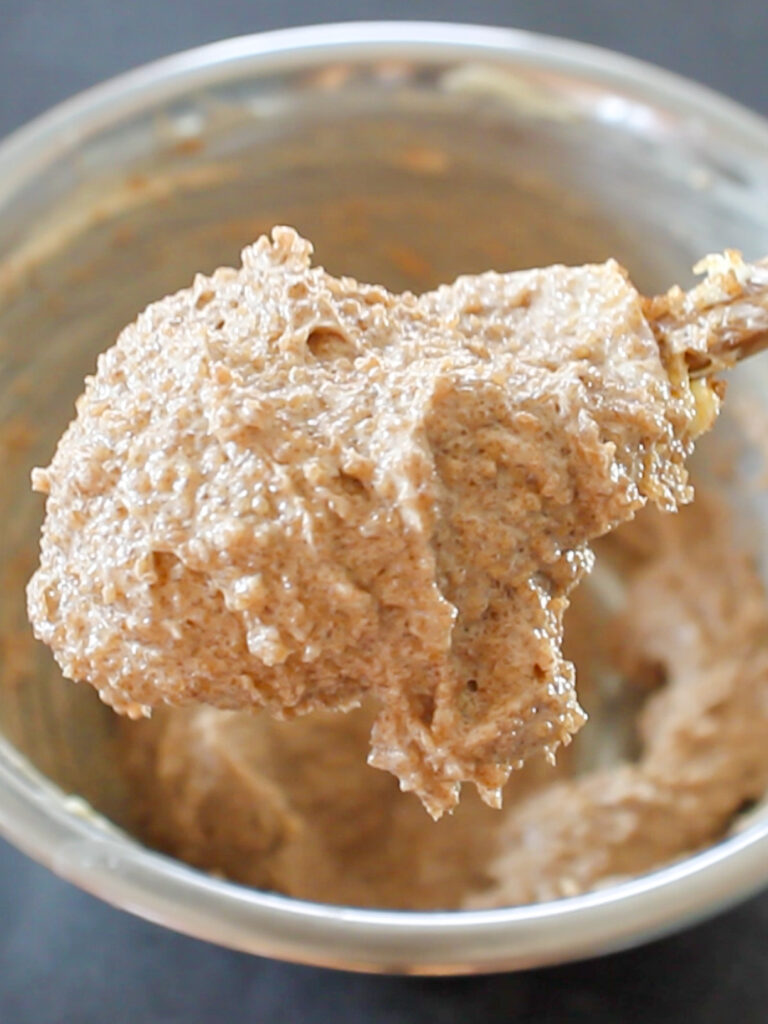
Let’s fill these beauties!
Now that the two most important parts are done, we will combine them both.
For this, roll out your puff pastry to a rectangle of 30 x 40 cm (12” x 16”). It’s important that your dough had enough rest or it will be too elastic and difficult to roll out.
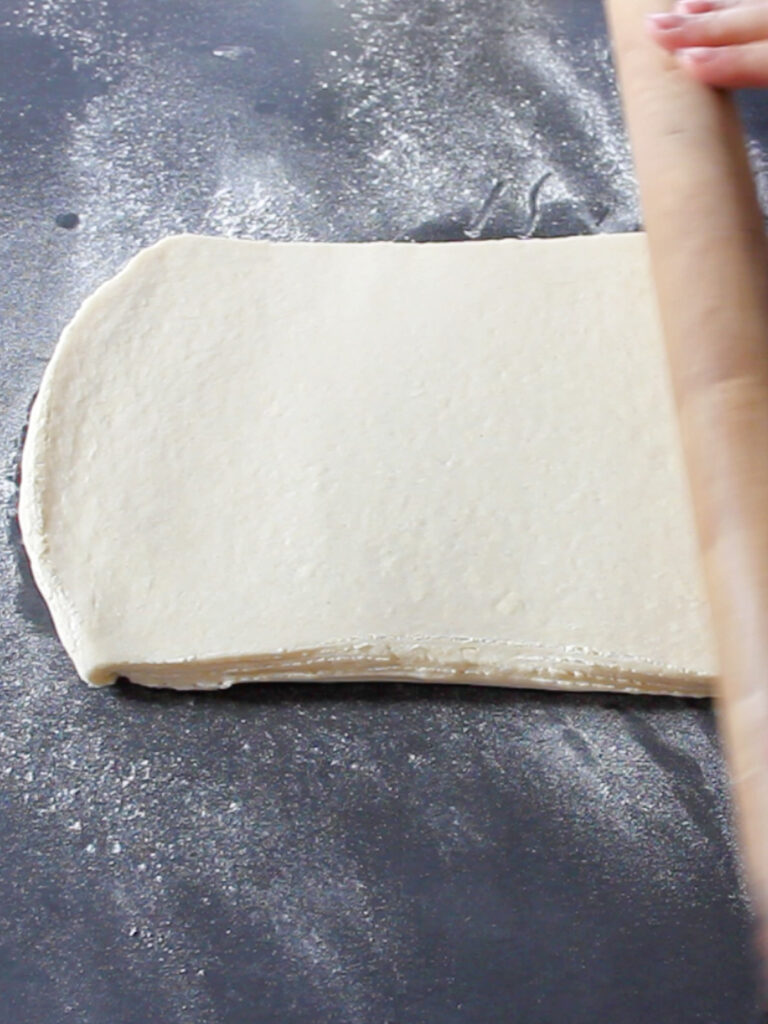
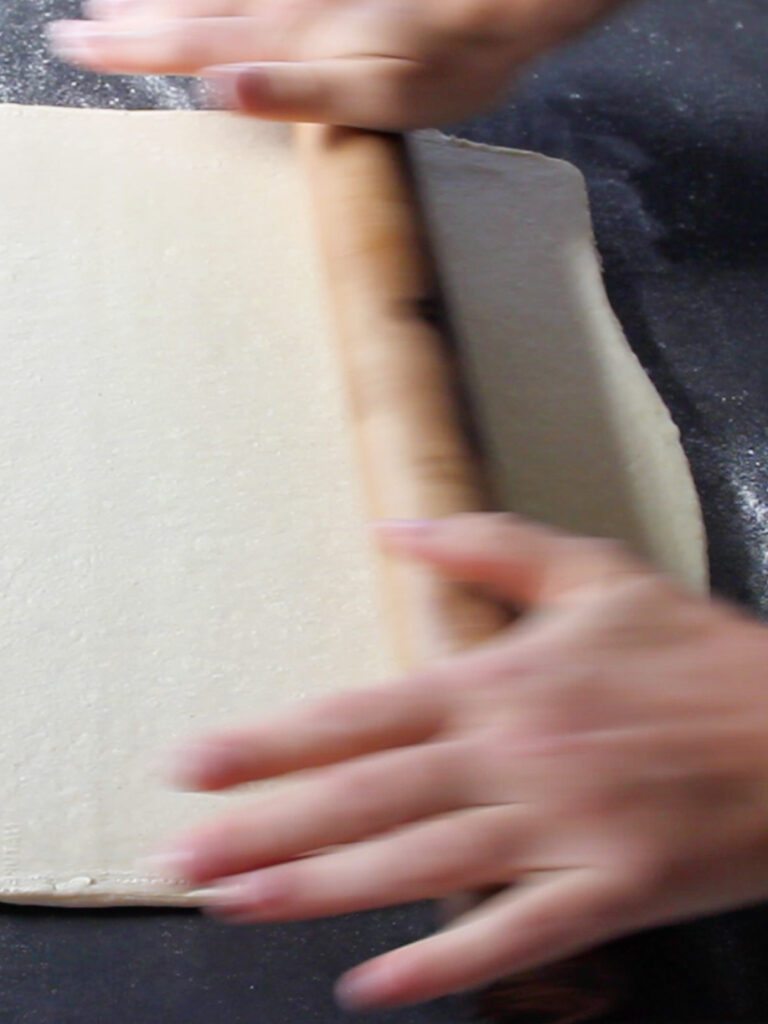
Now, spread the butter-sugar-cinnamon mix on top of your dough. Make sure you spare one centimetre on one side. That’s where we will close our roll. For the other sides you can be generous and go until the edges.
After, place your apples on top. Make sure to spread them evenly.
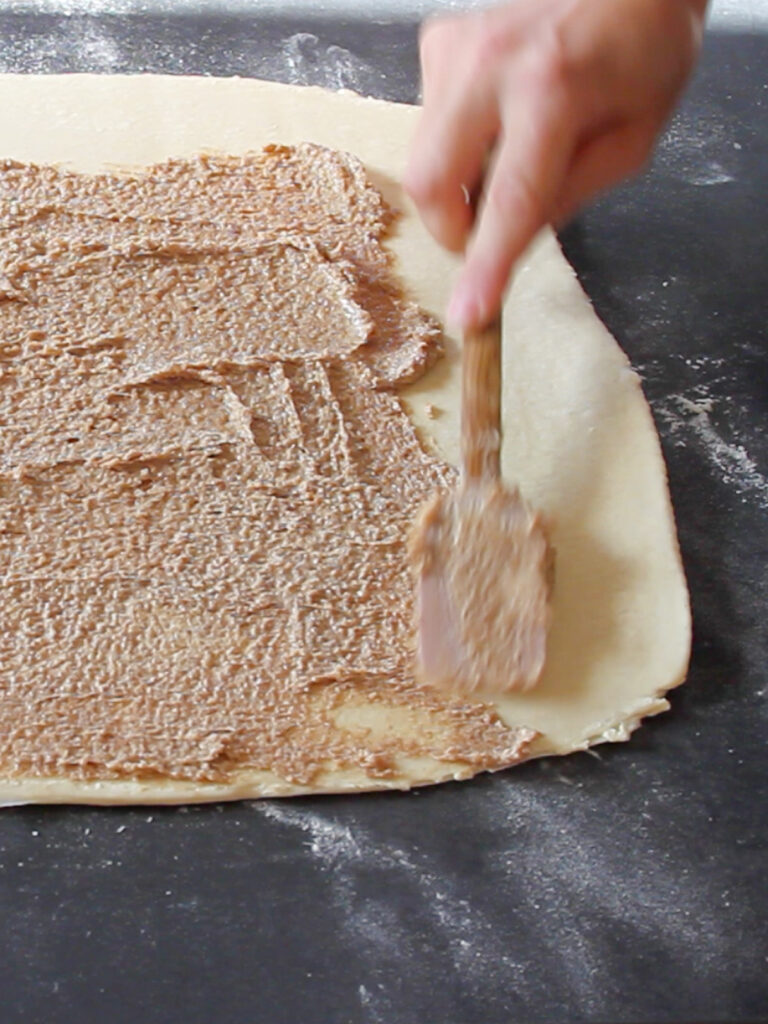
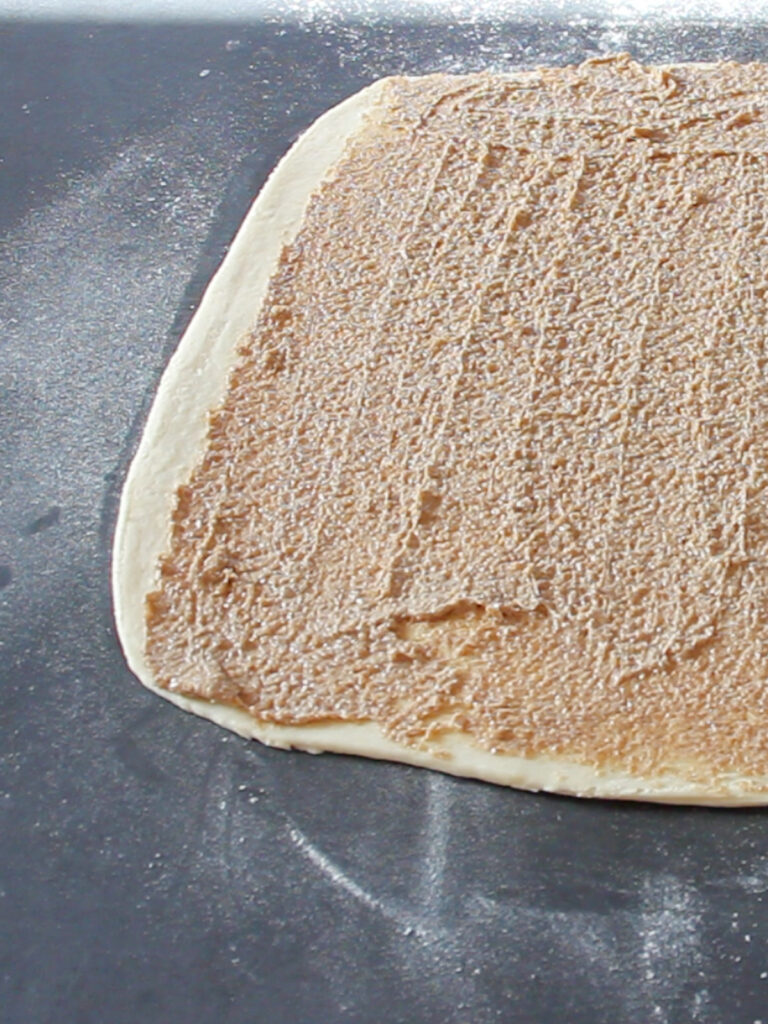
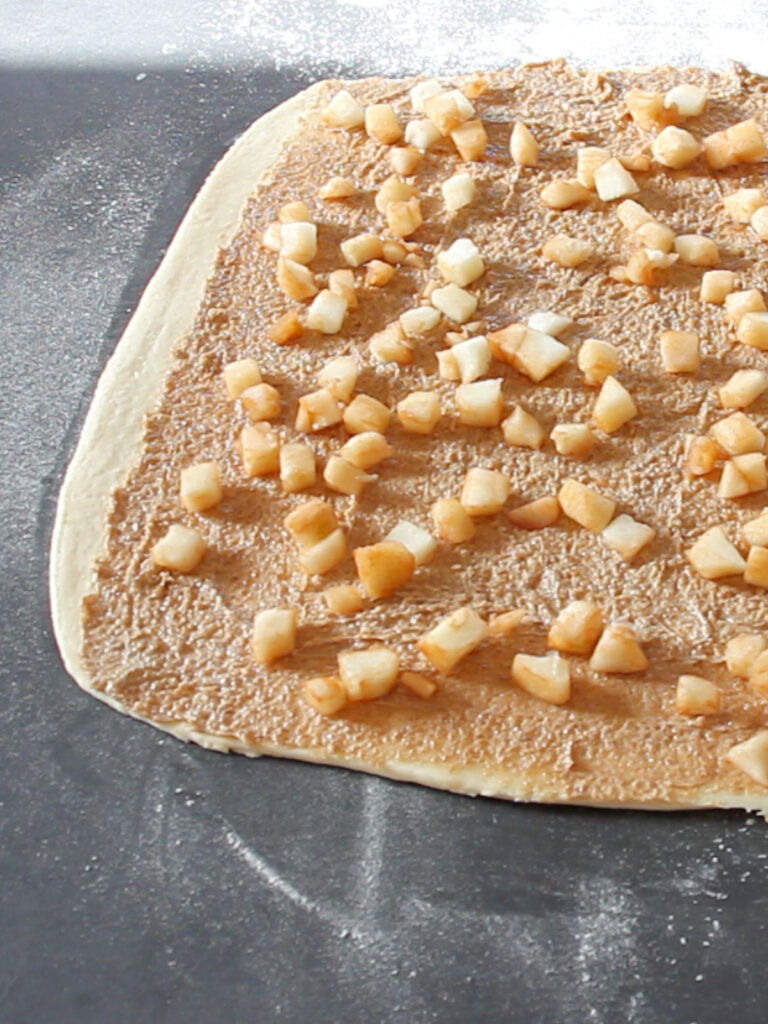
Start rolling on the opposite side from where you left the 1 cm border. Roll it tightly but gently. Once you reach the end, take some water and apply it onto the 1 cm (0.5”) border. Now roll until the end.
After that, this final step will help to tighten the roll. Again, watching the video will make it easier to understand what you need to do. Otherwise, I hope the images help as well. You need your cinnamon roll, parchment paper and I used a ruler. You can also use your rolling pin.
For this, place your roll in the middle of parchment paper. Cover it with parchment paper and place a ruler or a rolling pin close to your roll. With the other hand, pull the bottom layer of parchment paper towards you. This helps tighten your cinnamon roll. Then, cover it entirely in parchment paper and place it in the freezer for 5-10 minutes.
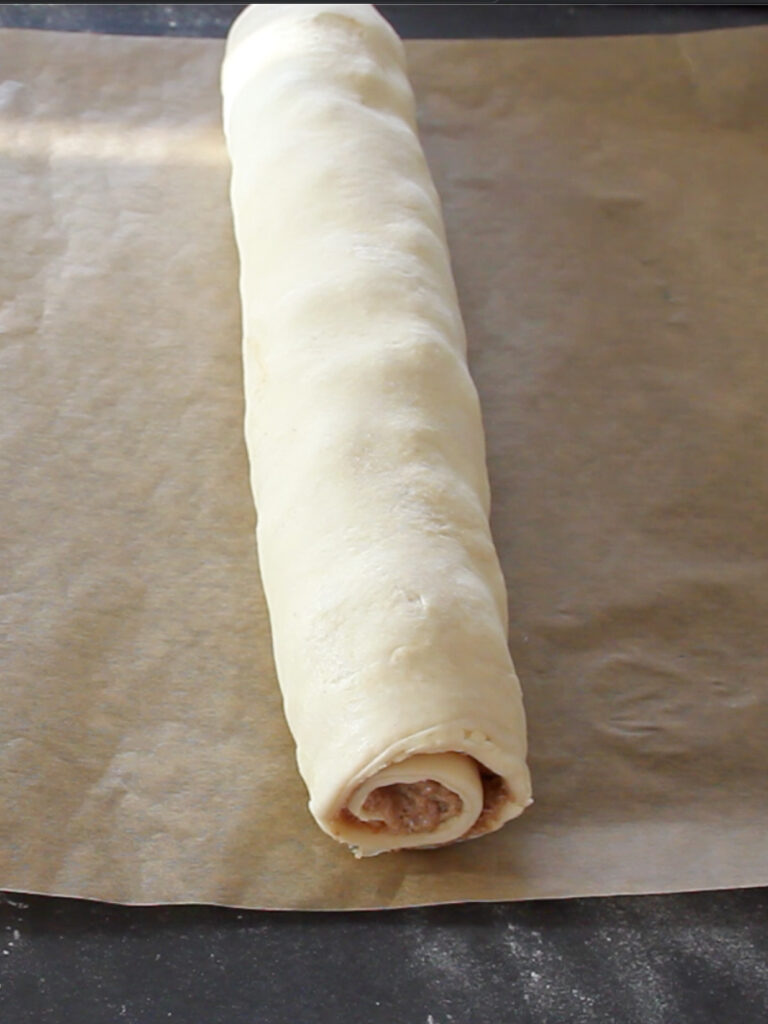
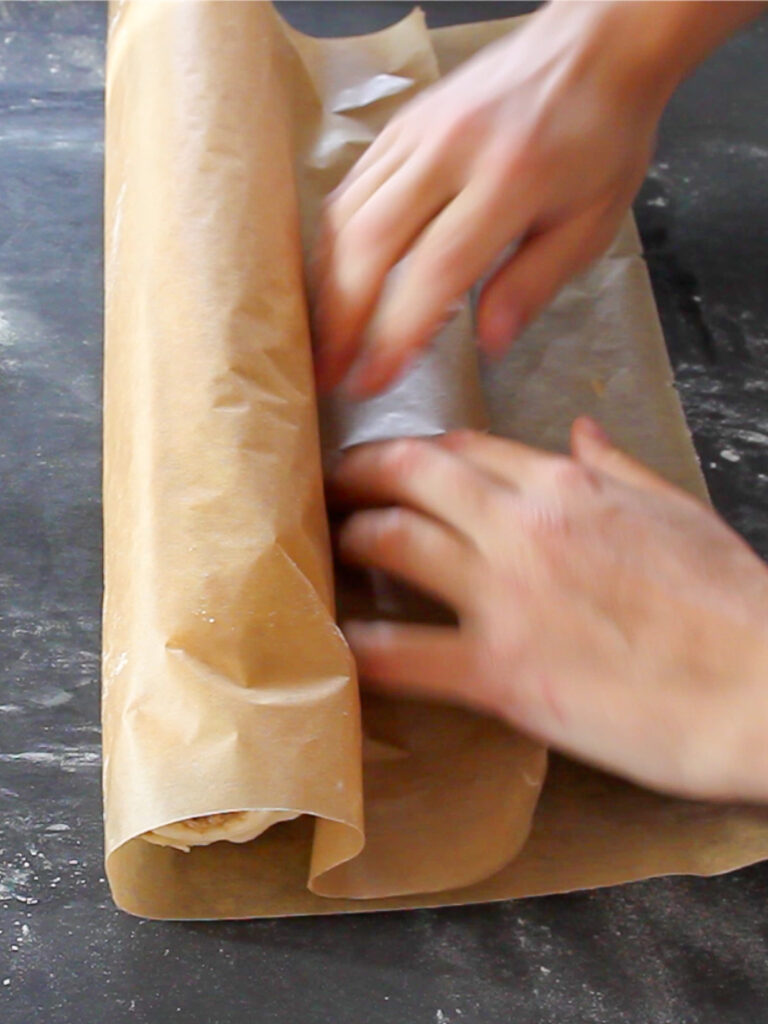
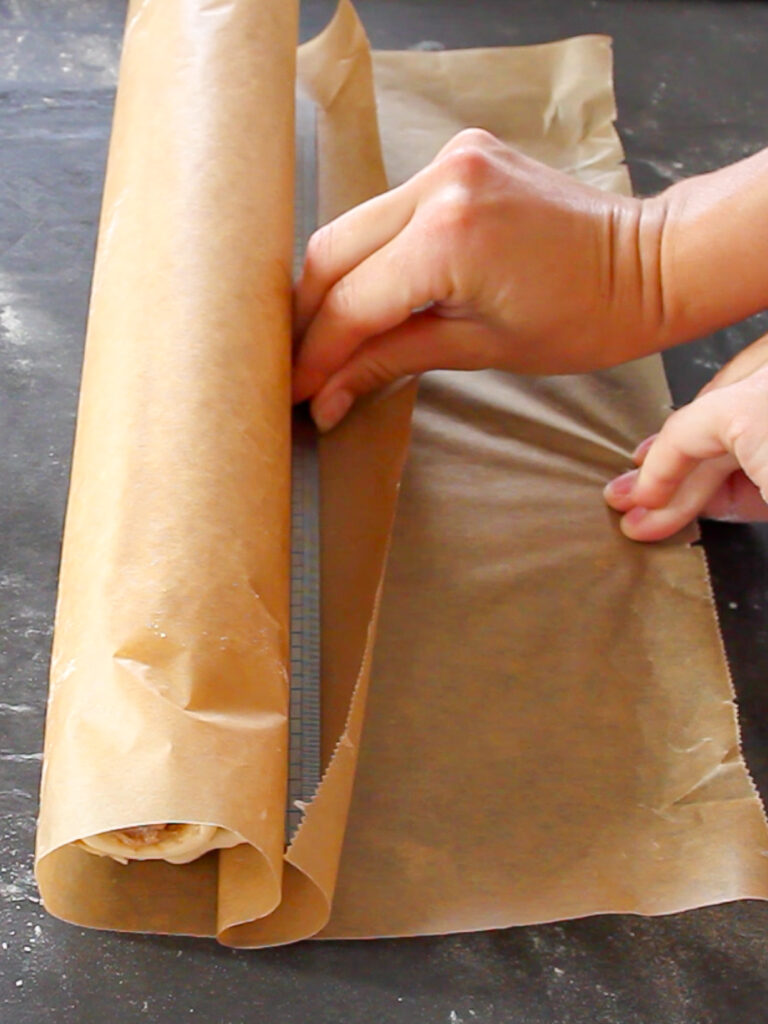
It’s time for vegan Apple Cinnamon Rolls!
We’re almost there! Now that your apple cinnamon roll is nice and cold, you can cut it a lot easier.
Using a bread knife, cut the off pieces of 2,5 cm (1”). You should get 12 little rolls out of it. Place them on two trays with parchment paper. Let them rise at room temperature for 2-2.5 hours.
Once your cinnamon rolls are done proofing bake them for 20 minutes at 160° C (320°F).
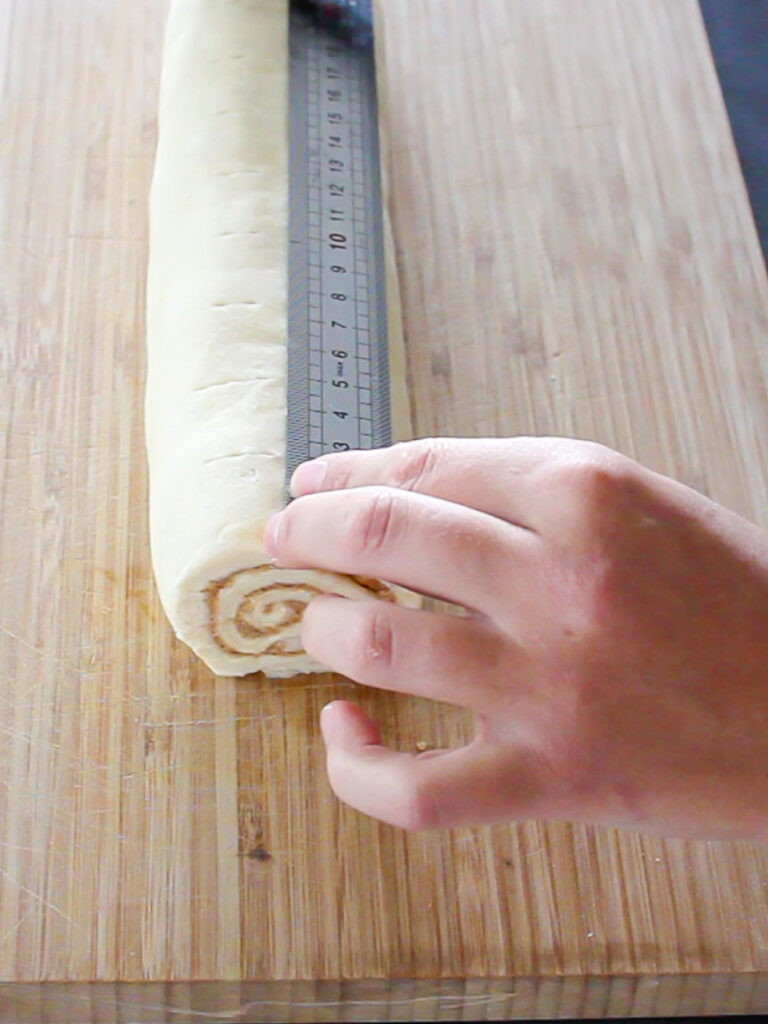
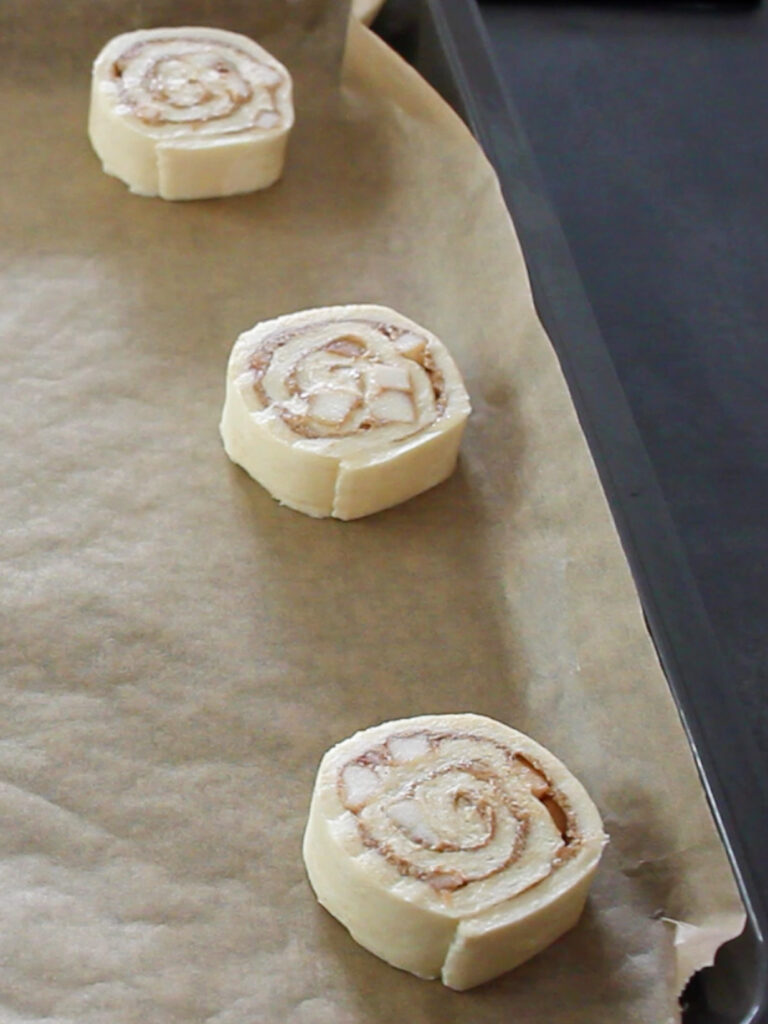

Freezing your vegan Apple Cinnamon Rolls: Don’t need 12 cinnamon rolls at once? You can either place half of them in the freezer before proofing them or once they’re baked. Thaw them in the fridge overnight and let them rise for 2-2.5 hours the next day if they haven’t yet risen. Then bake for 20 minutes at 160° C (320°F). If they were already baked, simply warm them up at 80°C (180°F) for 5-10 minutes.
Let’s finish with some icing!
Icing
- 250 g icing sugar
- lemon juice or water
While your cinnamon rolls are in the oven, place the icing sugar in a bowl, add a small (!) quantity of water or lemon juice and mix. Continue until you reach the desired consistency.
By now your kitchen will smell amazing. Take your cinnamon rolls out of the oven and let them cool down a bit. Then add some of the icing on top and enjoy!
As you might imagine you can fill these rolls with anything you like. In France they are traditionally filled with raisins soaked in rum and pastry cream (called pains aux raisins). You can also do pastry cream and chocolate drops for example. It also doesn’t have to be rolled, you can give your puff pastry any form you like. Why not go for a croissant shape with some of the filling inside?
Whatever you decide to do with this recipe, I hope you enjoy it and create some happiness for you and the people around you. That’s what’s most important!
Also, feel free to share your result with me by simply tagging me @wildflour__patisserie on instagram or leave a comment below.
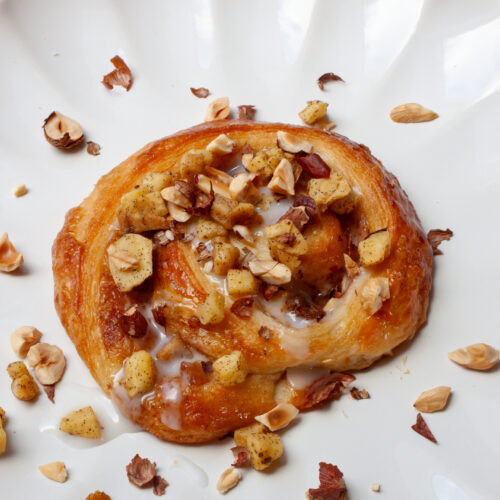
Vegan Puff Pastry Apple Cinnamon Rolls
Ingredients
Puff Pastry
- 150 g T45 flour
- 150 g T55 flour
- 6 g salt
- 45 g sugar
- 15 g fresh yeast or 5 g dried yeast
- 145 g vegan milk (soy milk)
- 60 g vegan butter
- 150 g vegan butter, 82% fat
Apple Cinnamon Filling
- 2-3 apples
- 70 g vegan butter
- 100 g brown sugar
- 1 teaspoon cinnamon
- 1/2 vanilla bean
Icing
- 250 g icing sugar
- lemon juice/water
Instructions
Puff Pastry
- Add the T45 flour, T55 flour, salt, sugar, yeast, vegan milk and the first amount of butter (60 g) into your mixing bowl.
- Mix for 3 minutes on low speed to combine your ingredients. After, keep on mixing for 7-9 minutes on medium speed. Stop the machine when you can easily stretch your dough and you have a beautiful glutinous net.
- Shape your dough into a ball, cover it with cling film and let it sit at room temperature for 35-45 minutes.
- Take a piece of parchment paper and fold it into a 15 x 30 cm (6'' x 12'') rectangle. Also prepare a 15 x 15 cm (6'' x 6'') rectangle out of parchment paper as well. Have a look the video or the photos above to understand better that step.
- Now, take the second amount of vegan butter (150 g) and place it inside your 15 x 15 cm (6'' x 6'') parchment paper rectangle. Close it and roll the butter into all the corners. Your butter might have to soften a bit before. Once this step is done, put the butter back in the fridge
- Once your dough has risen, place it inside your 15 x 30 cm (6'' x 12'') parchment paper rectangle. Now flatten it by pressing it down with your hands. You want to remove all the air that is inside of your dough.Then close your rectangle and push your dough into all the corners. You want this to be as even as possible. At this step, don't worry if the dough doesn't stay perfectly in the corners. After, place the dough into the freezer for 10 minutes.
- Take out the chilled dough and the butter. If necessary, roll the dough into the corners. Place the dough rectangle in front of you. Place your butter rectangle on one of the sides of your dough rectangle. Then, using a knife, cut your dough in the middle. Place the other half of your dough on top of the butter. You now have a square sandwich of dough – butter – dough.
- Roll out your dough to a length of around 60 cm (24''). Remove any excess flour on top of your dough and do a double fold. If you are unfamiliar with this step, check out my video or the description above.
- Put your puff pastry in the freezer for 5-10 minutes.
- Then, cut open the two folded sides of your dough. These should be left and right of you, meaning that one of the open sides is facing you (see image 14).Roll out your dough to around 40 cm (16''), then do a single fold. Now, put the dough into the fridge for at least one hour for it to relax.
- Prepare the Apple Cinnamon Filling in the meantime.
Apple Cinnamon Filling
- Slightly heat the butter in the microwave until soft. Add the sugar and cinnamon and mix everything well.
- Peel your apples, cut them into small cubes and place them in a bowl. Scrape 1/2 vanilla bean and add to the apples.
Assembling, proofing and baking the vegan Apple Cinnamon Rolls
- For the next step, roll out the puff pastry to a 30 x 40 cm (12'' x 16'') rectangle.
- Spread the soft butter mixture on top of the puff pastry. Make sure you spare one centimetre on one side.After, place the apples on top.
- Start rolling on the opposite side from where you left the 1 cm (0.5'') border. Roll it tightly but gently. Once you reach the end, take some water and apply it onto the 1 cm border. Now roll until the end.
- Tighten the roll as shown in the video and images above. Freeze for 5-10 minutes.
- Using a bread knife, cut the off pieces of 2,5 cm (1''). You should get 12 little rolls out of it. Place them on two trays with parchment paper. Let them rise at room temperature for 2-2.5 hours.
- Once your cinnamon rolls are done proofing bake them for 20 minutes at 160° C (320°F). Take them out of the oven once their golden.
Icing
- Place the icing sugar in a bowl and add a small quantity of water or lemon juice and stir. Continue until you reach the desired consistency.
- Drip the icing over your rolls and enjoy!



